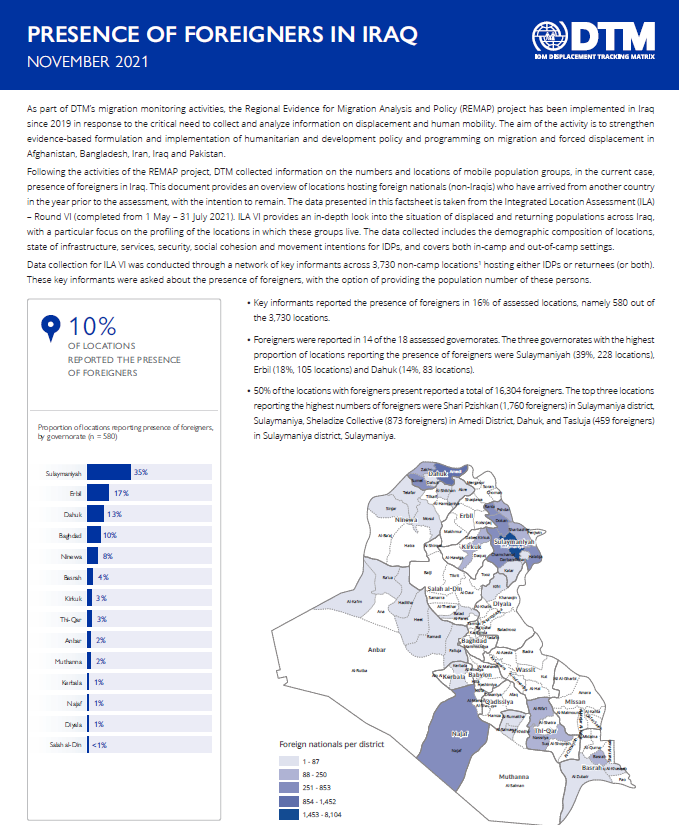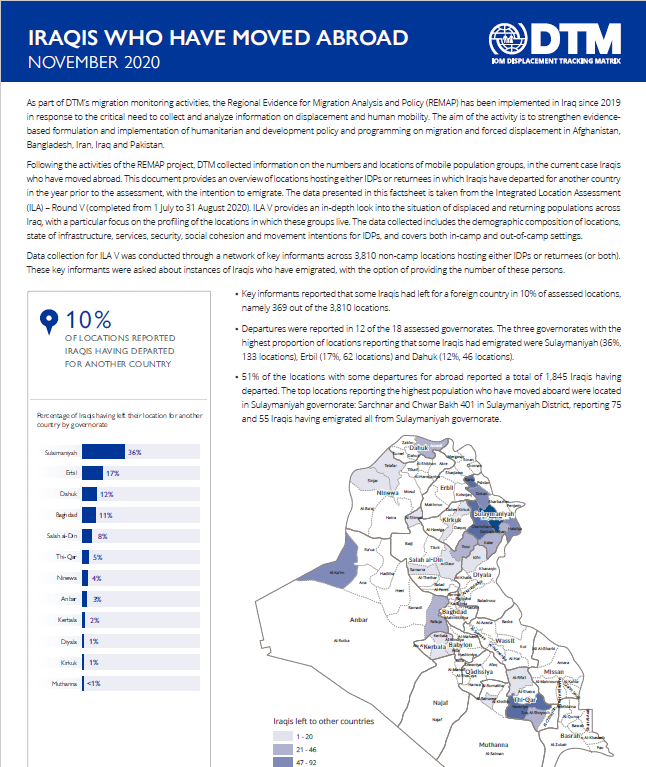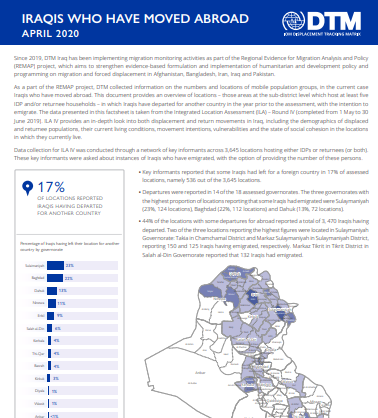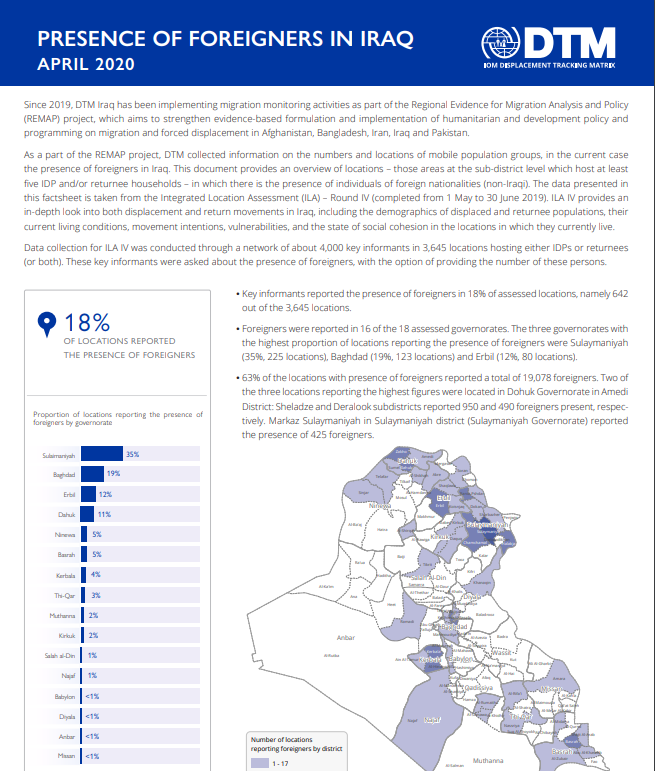Cross Border Monitoring Reports
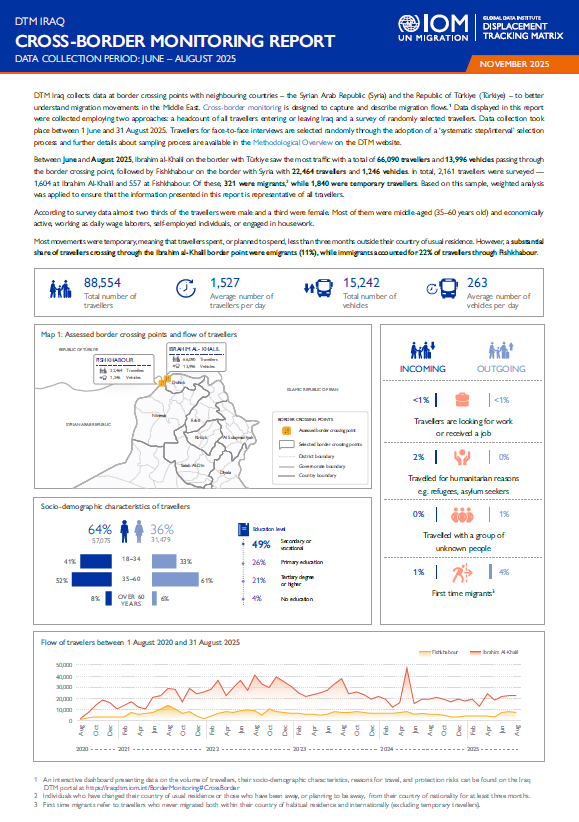
CROSS-BORDER MONITORING
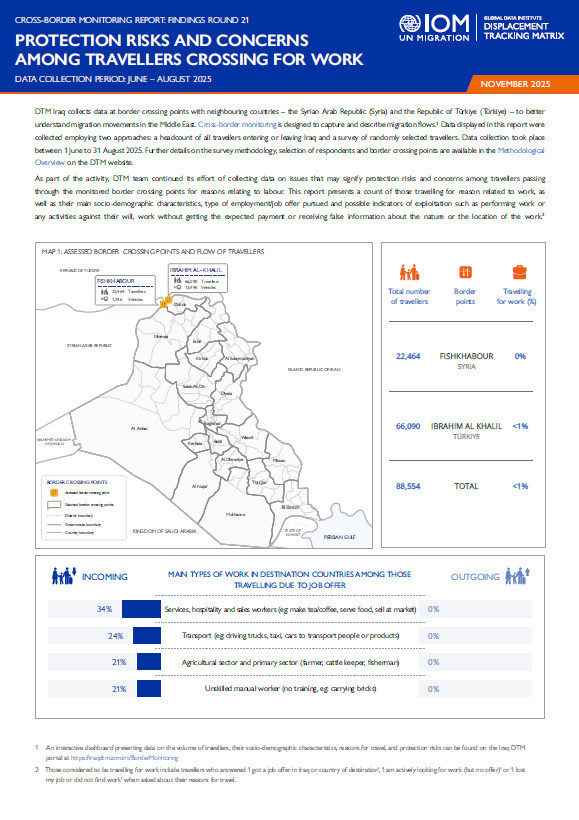
PROTECTION RISKS AND CONCERNS

CROSS-BORDER MONITORING

PROTECTION RISKS AND CONCERNS
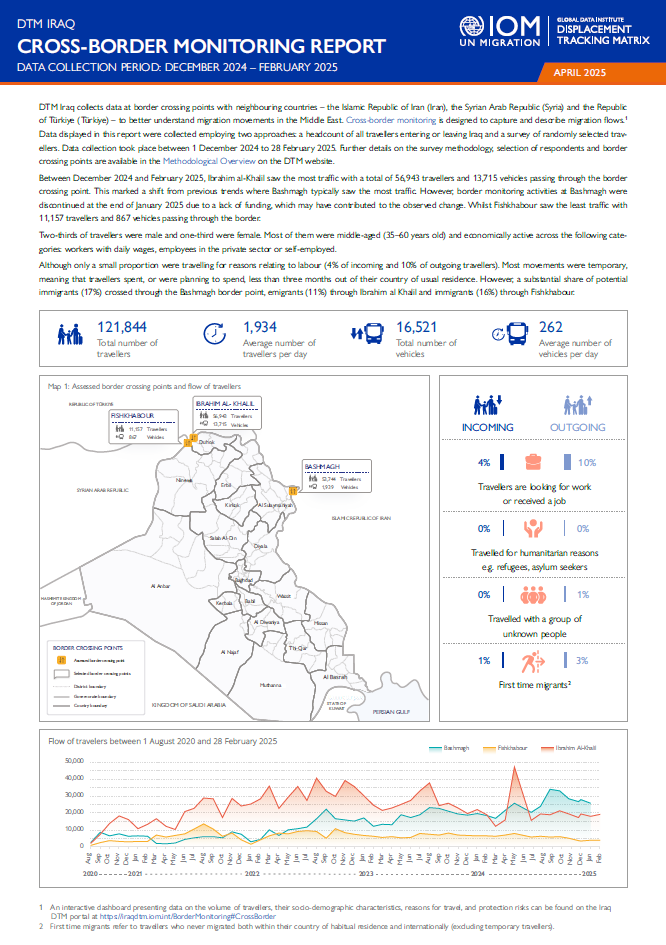
CROSS-BORDER MONITORING
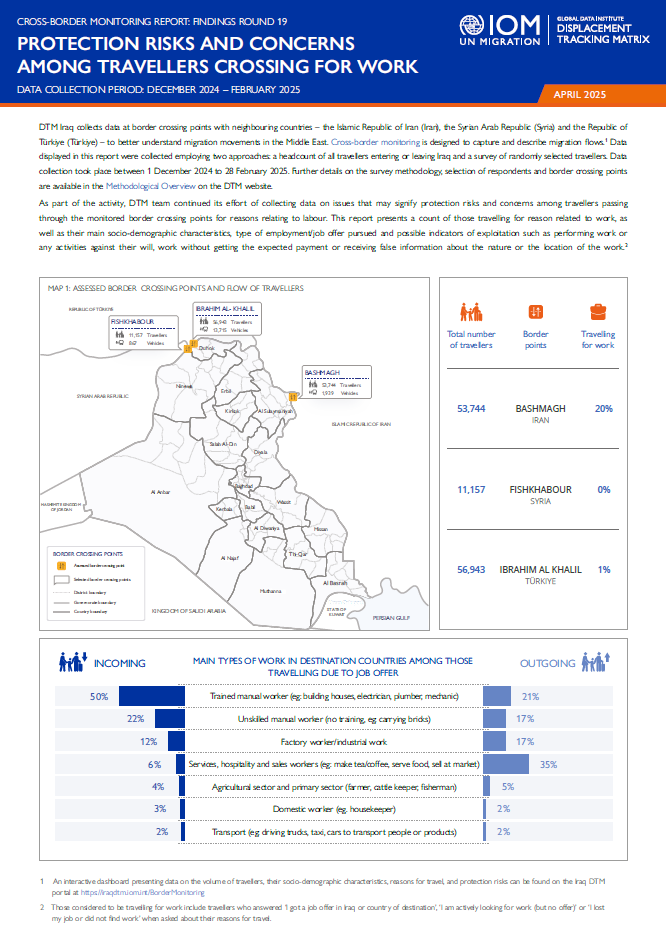
PROTECTION RISKS AND CONCERNS
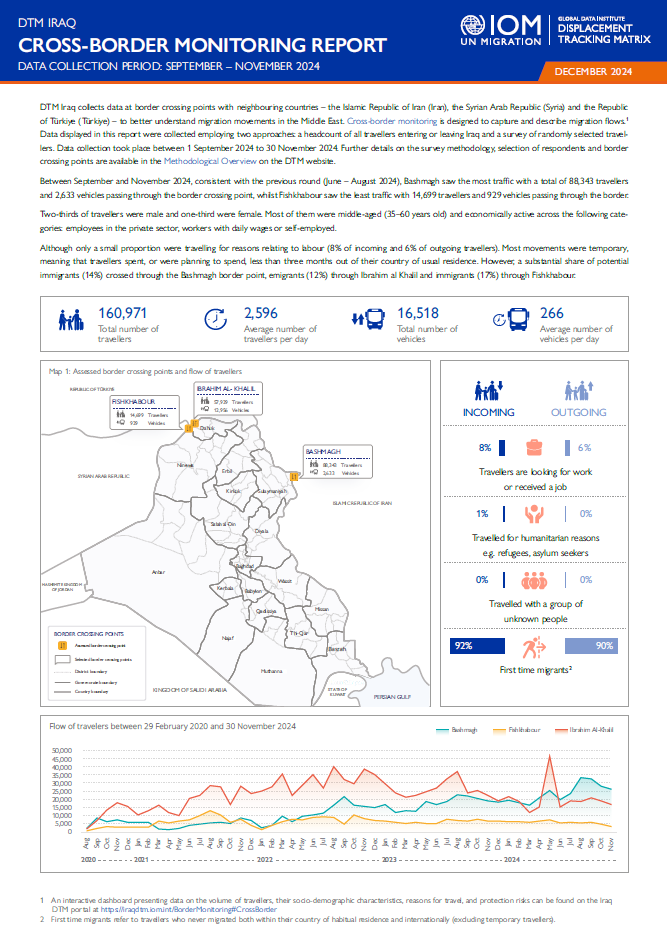
CROSS-BORDER MONITORING
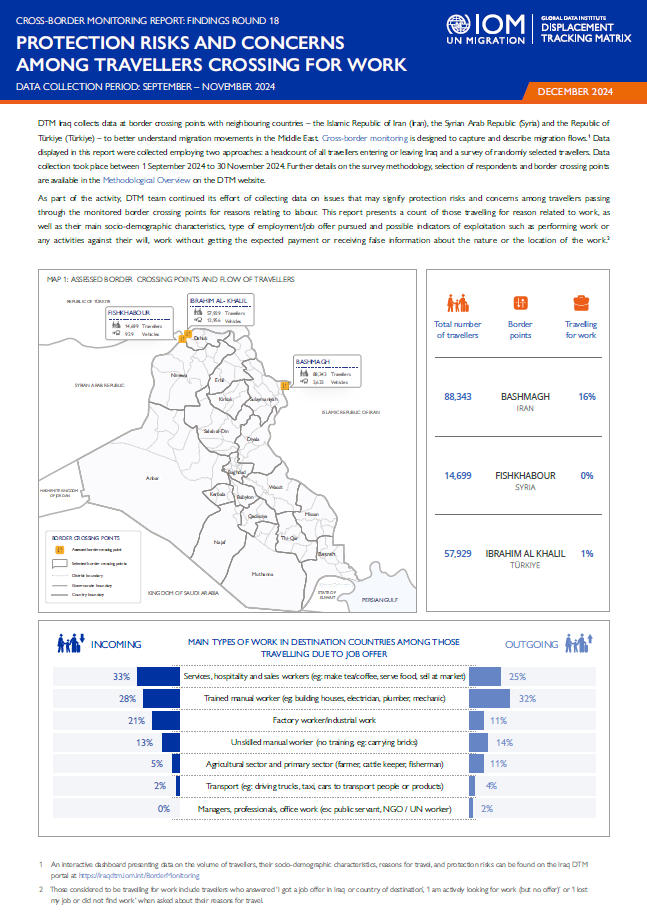
PROTECTION RISKS AND CONCERNS
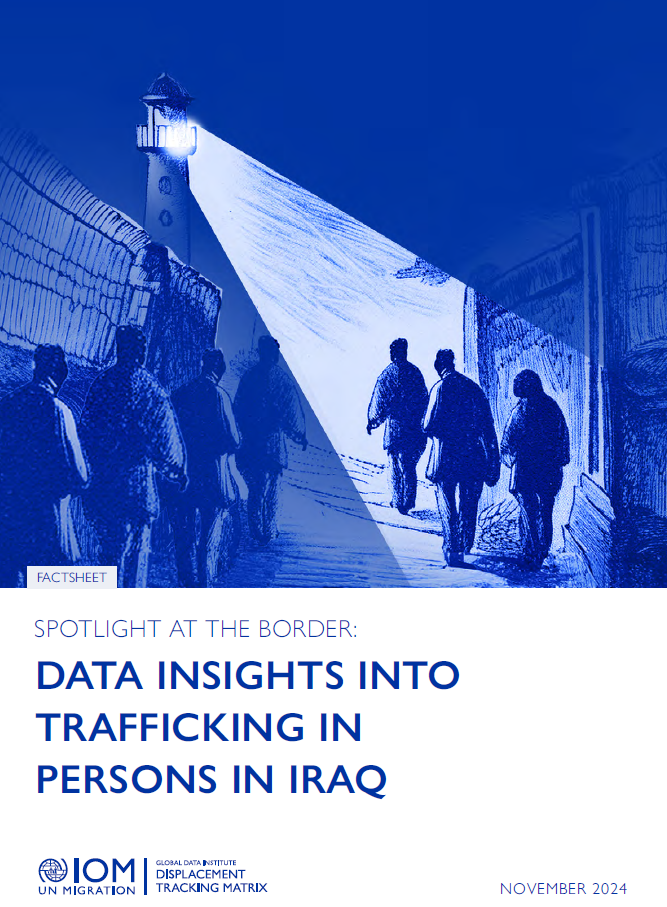
DATA INSIGHTS
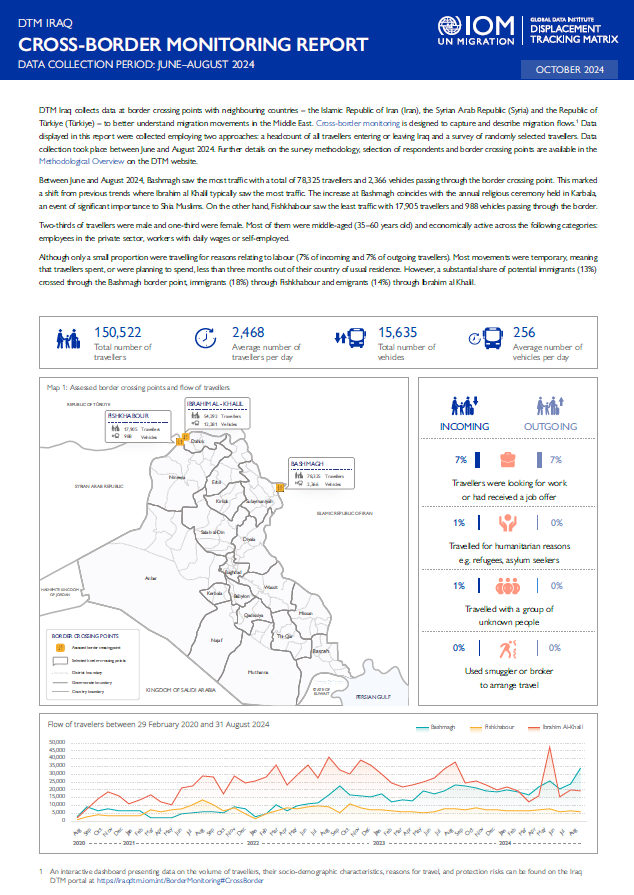
CROSS-BORDER MONITORING

PROTECTION RISKS AND CONCERNS
CROSS-BORDER MONITORING
PROTECTION RISKS AND CONCERNS
CROSS-BORDER MONITORING
PROTECTION RISKS AND CONCERNS
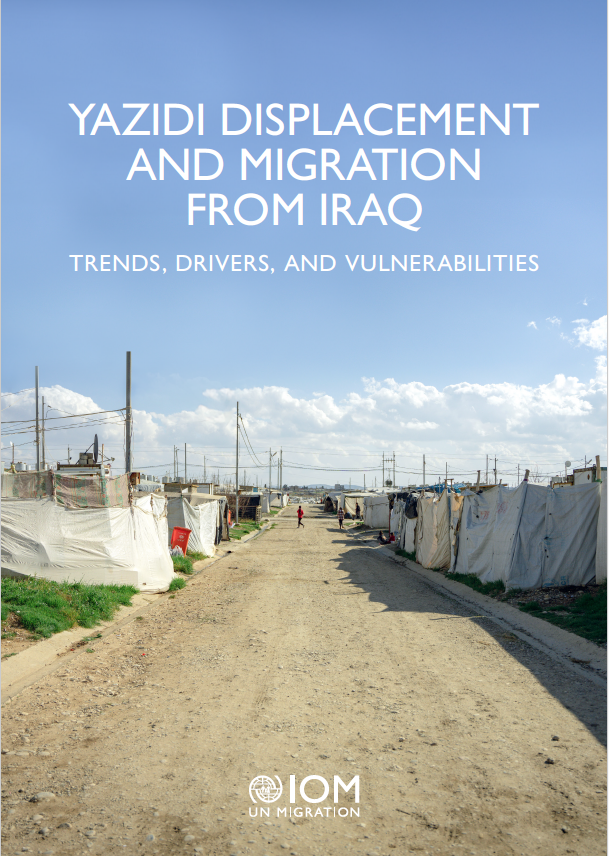
YAZIDI DISPLACEMENT AND MIGRATION FROM IRAQ
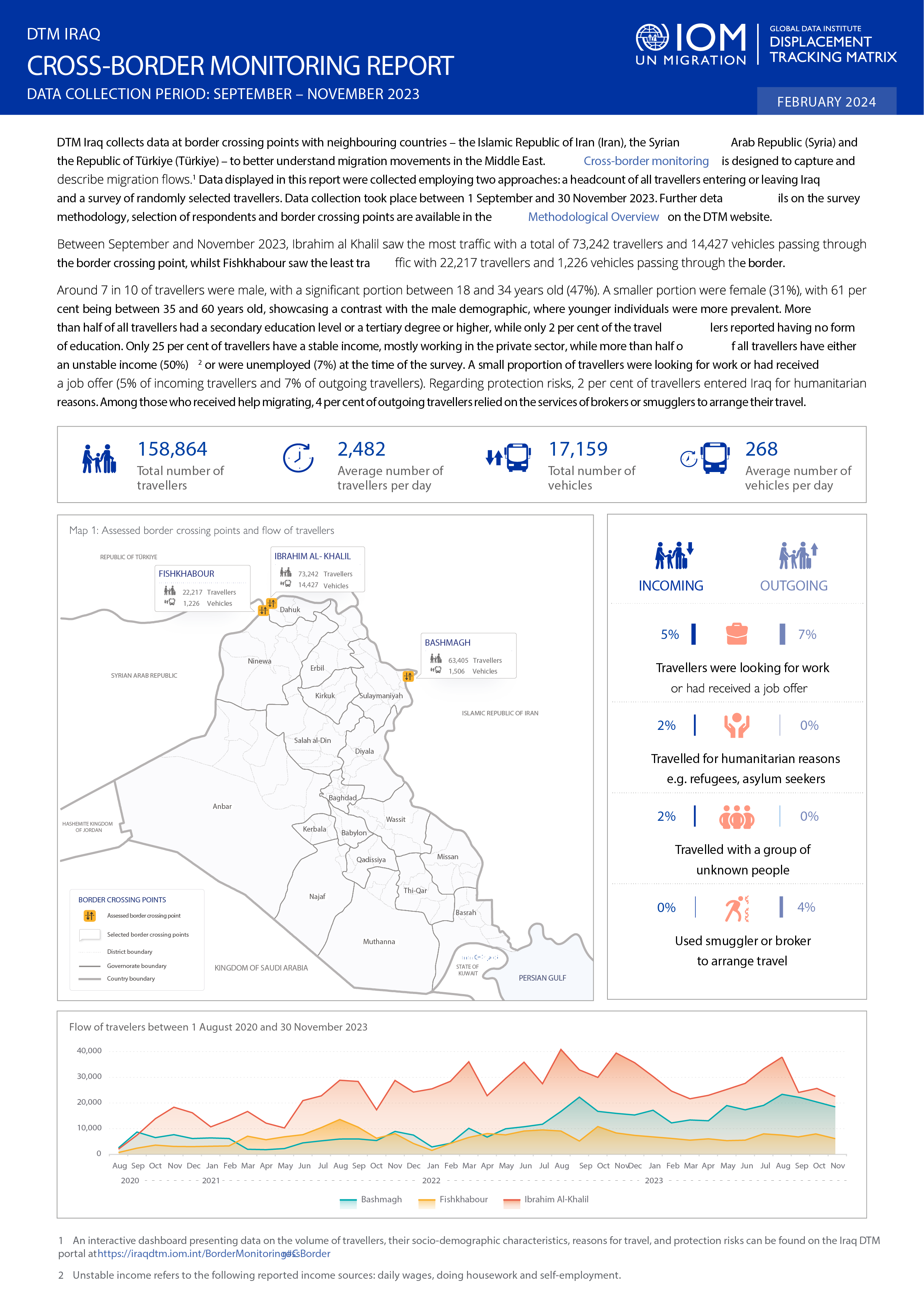
CROSS-BORDER MONITORING
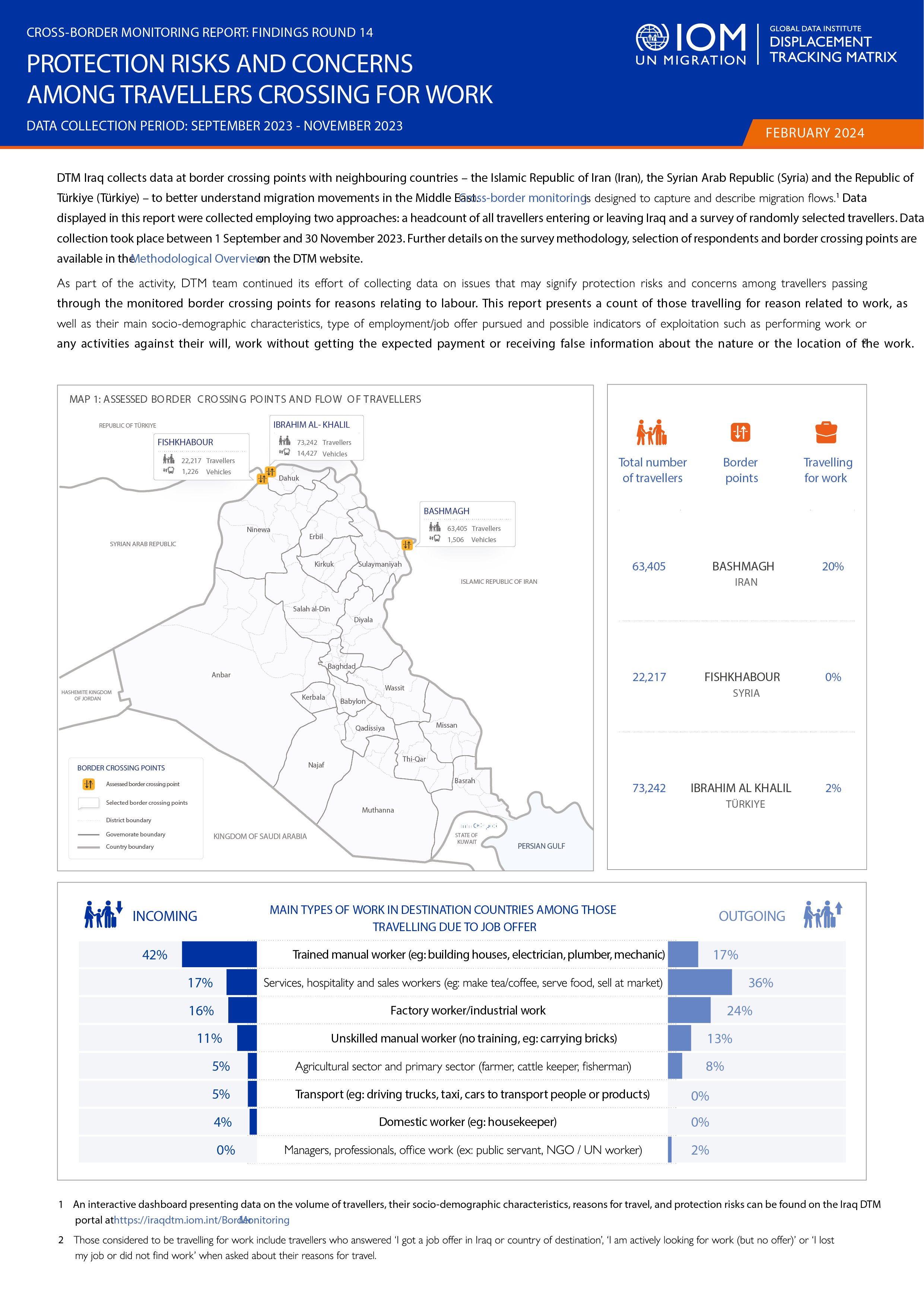
PROTECTION RISKS AND CONCERNS
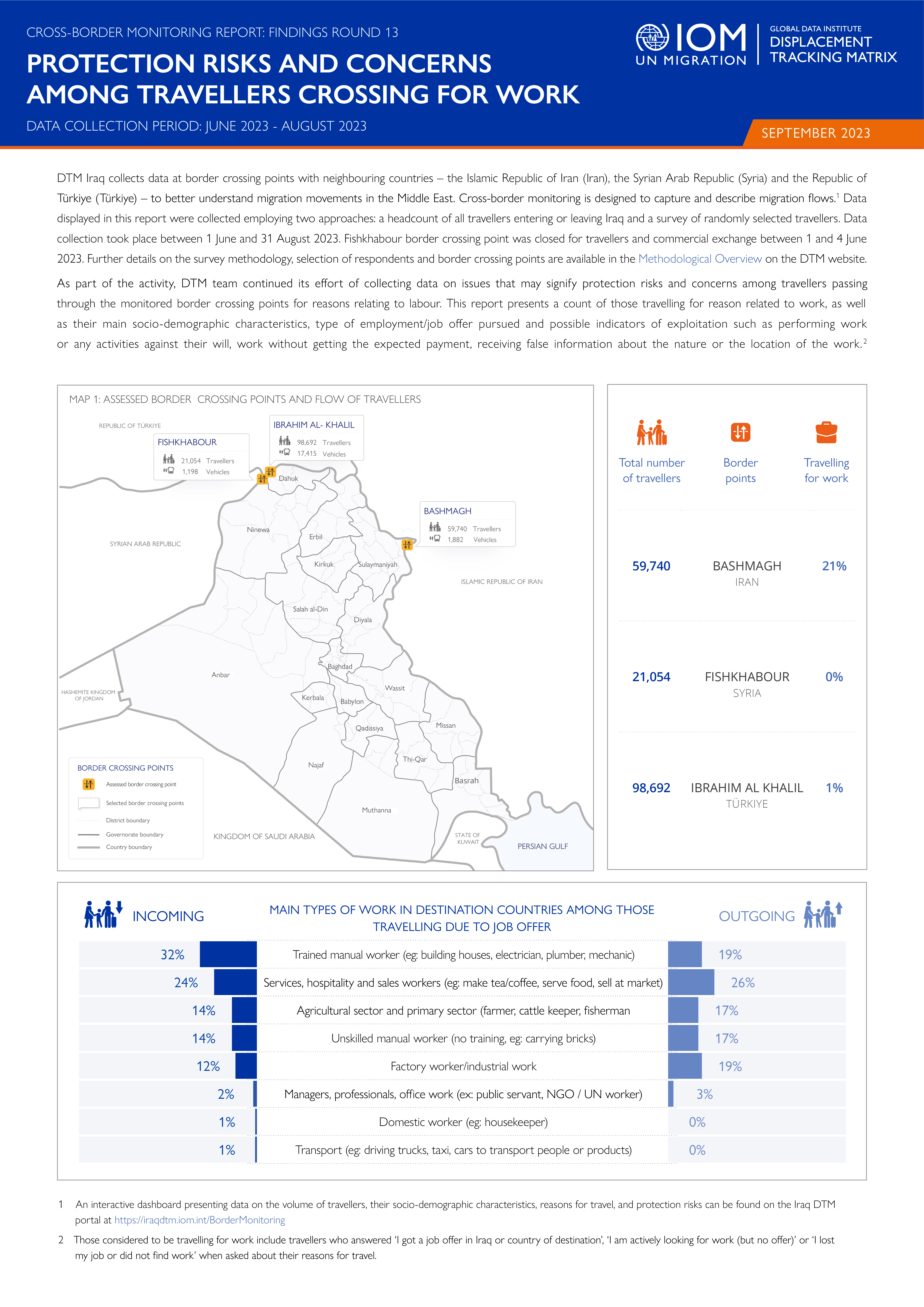
PROTECTION RISKS AND CONCERNS
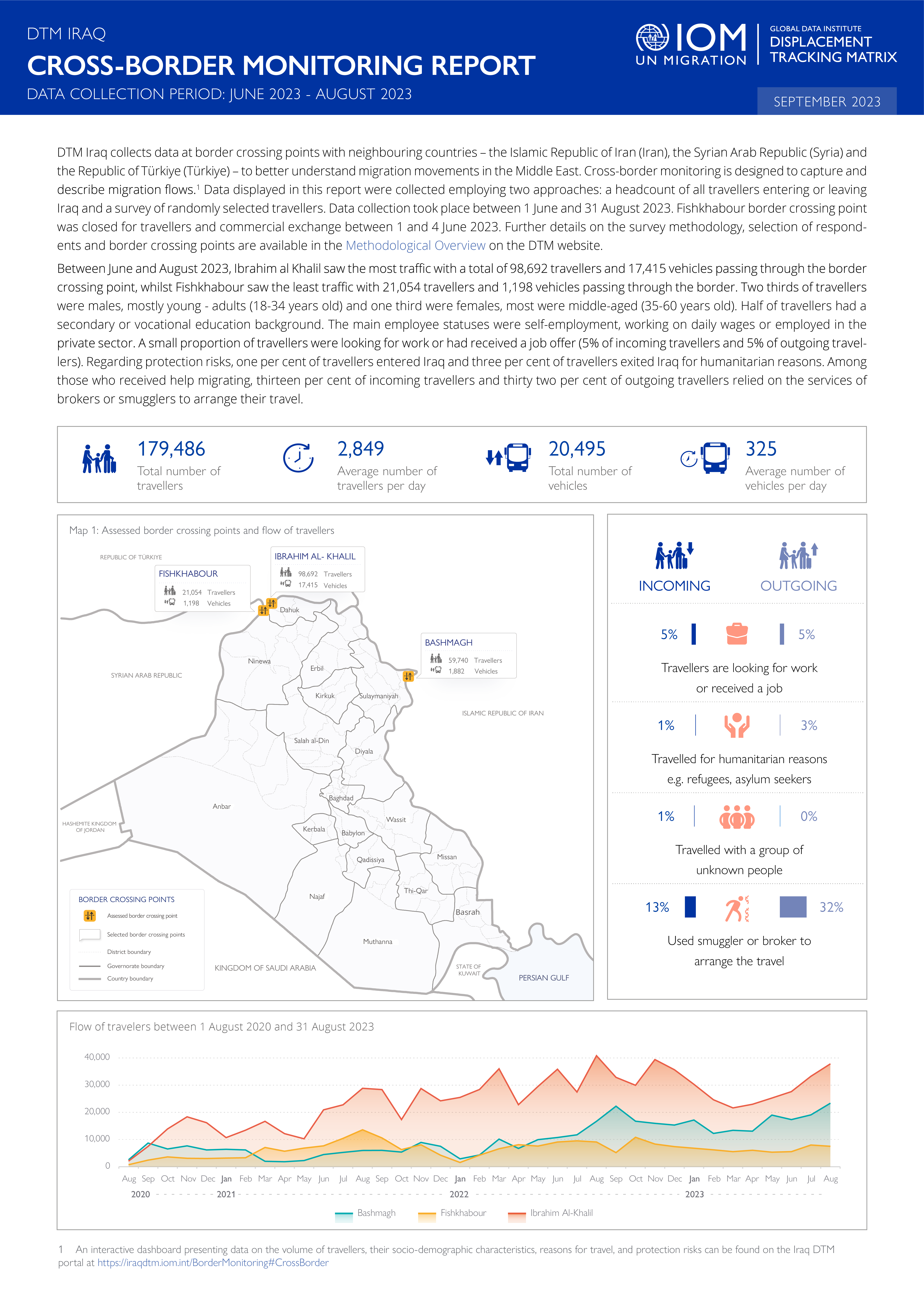
CROSS-BORDER MONITORING
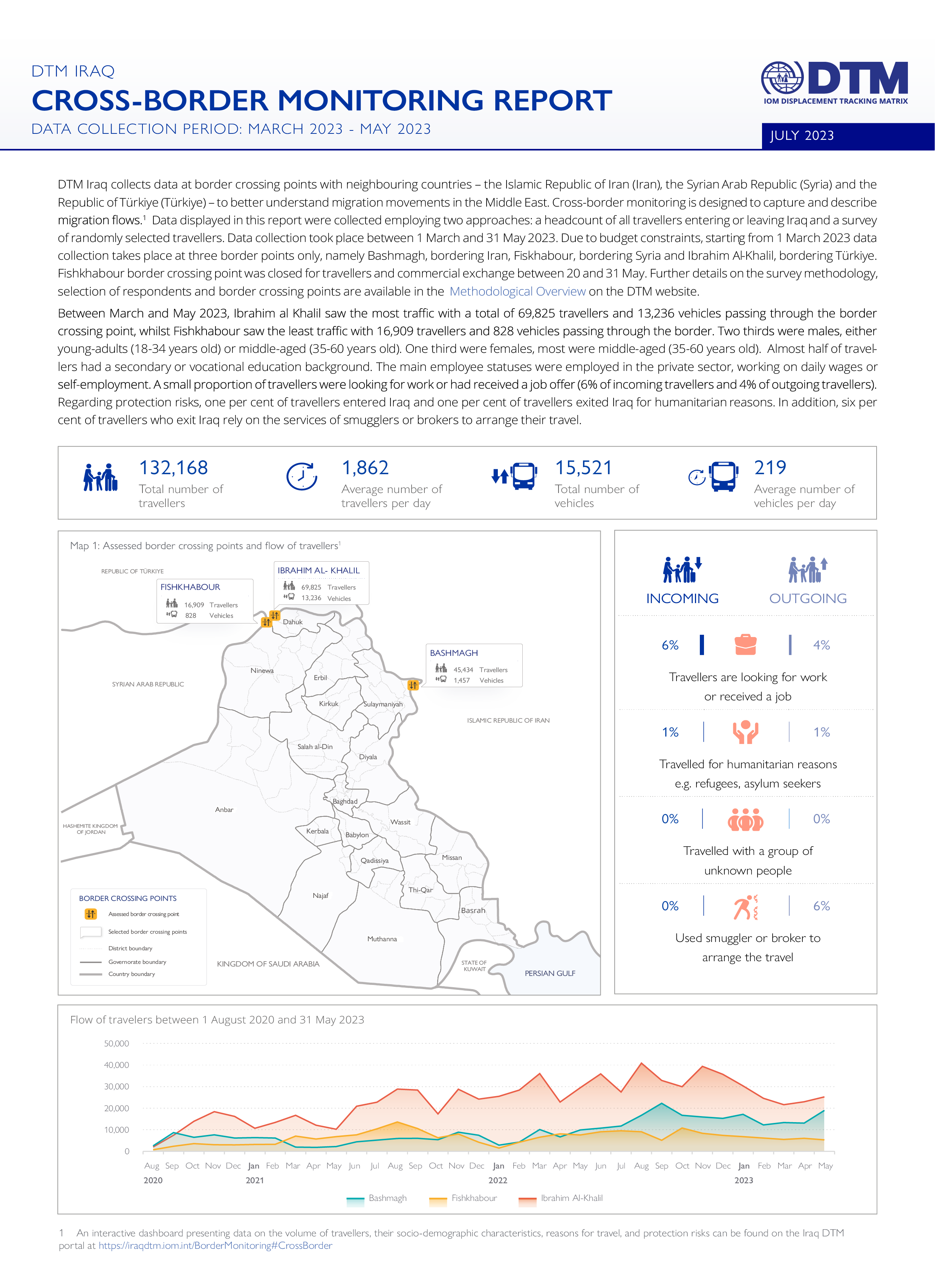
CROSS-BORDER MONITORING
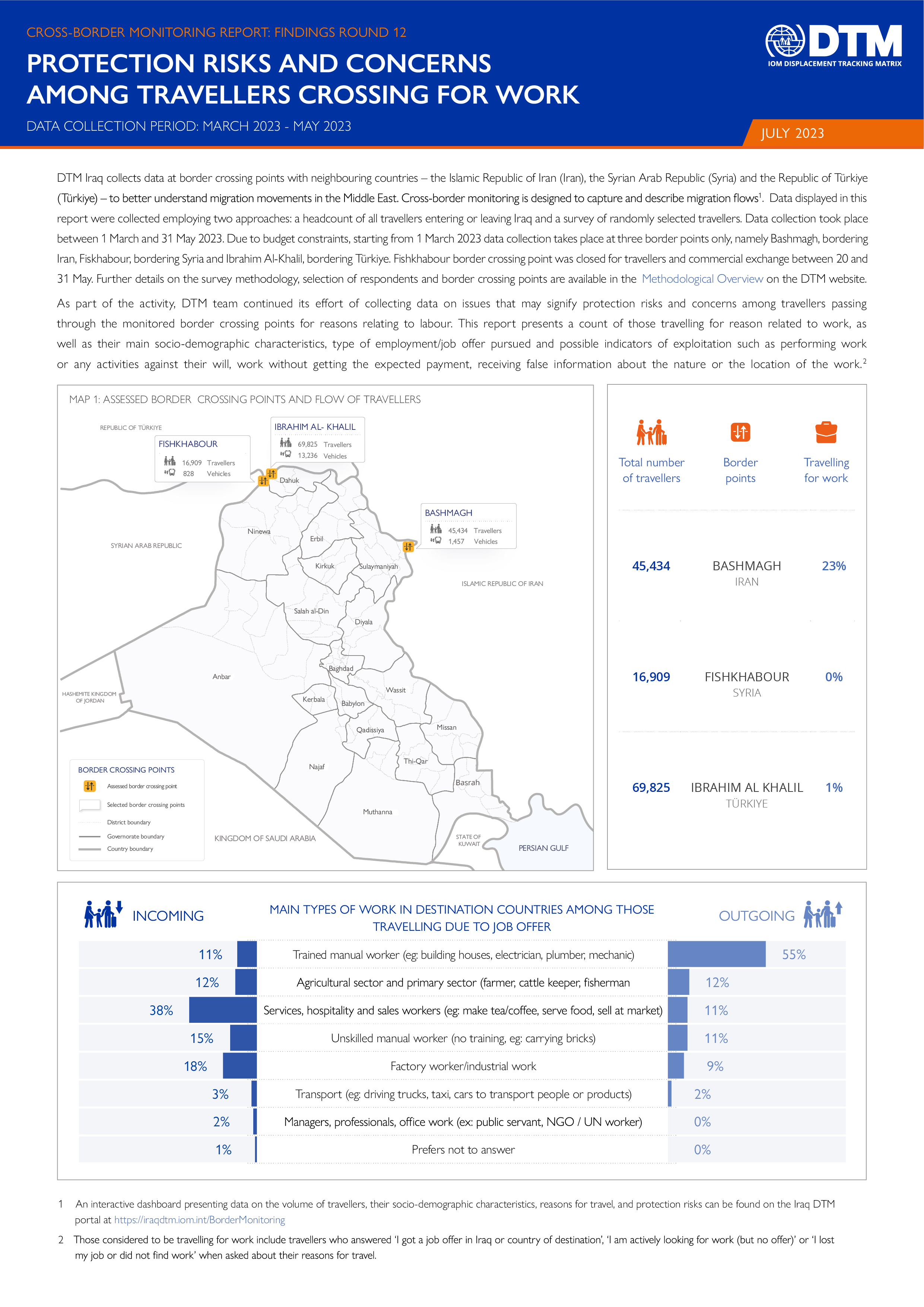
PROTECTION RISKS AND CONCERNS
PROTECTION RISKS AND CONCERNS
CROSS-BORDER MONITORING
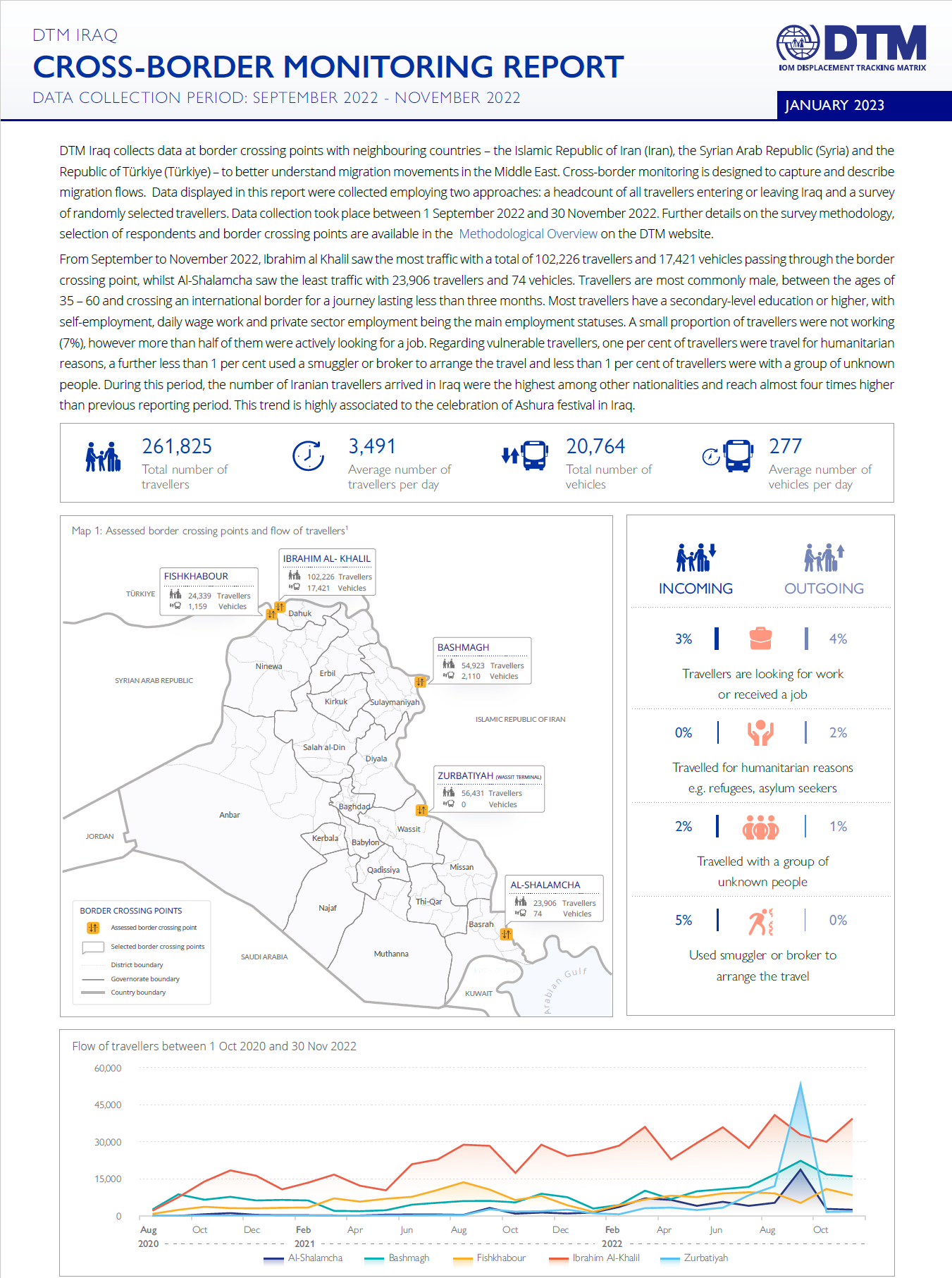
CROSS-BORDER MONITORING

PROTECTION RISKS AND CONCERNS
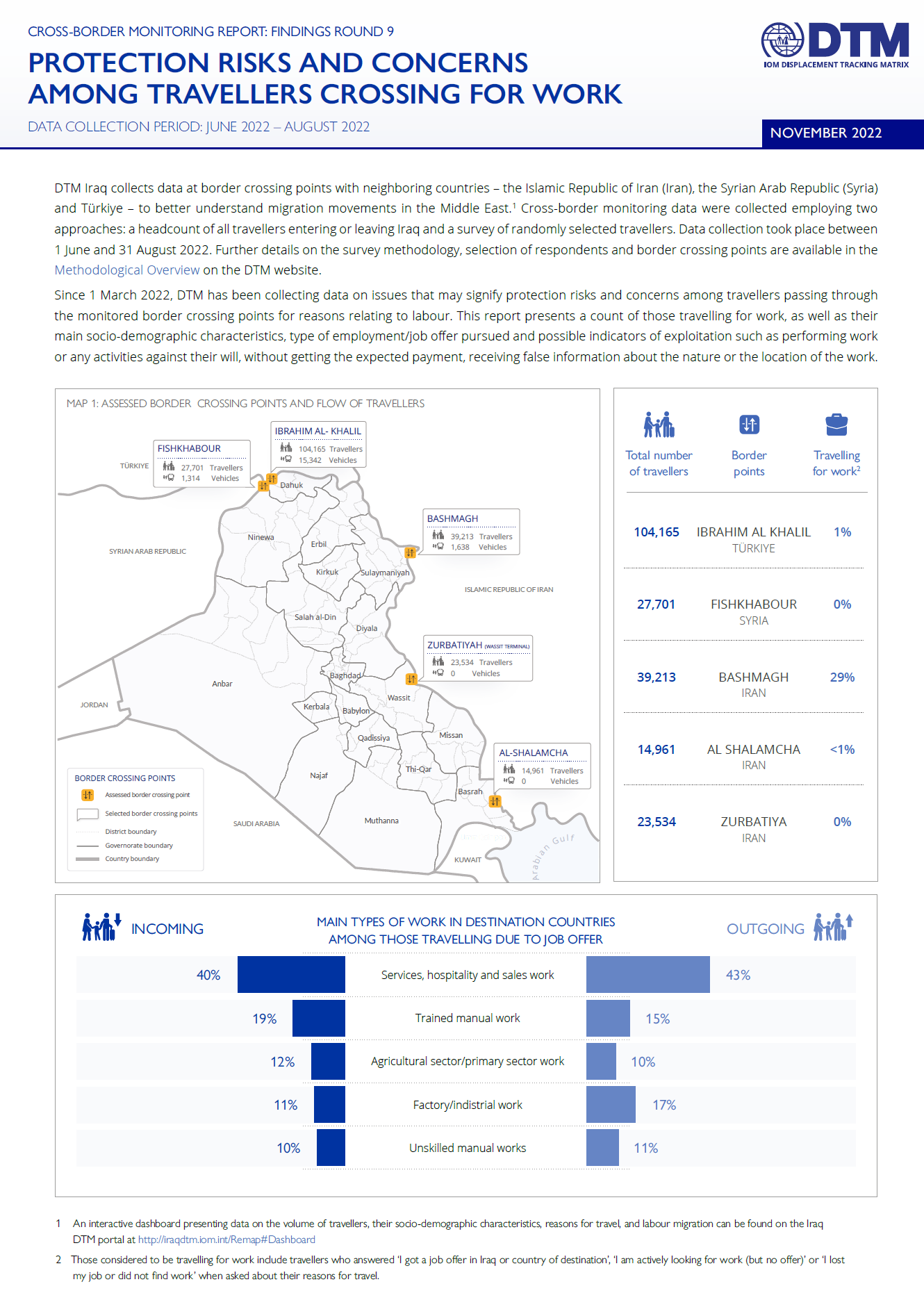
PROTECTION RISKS AND CONCERNS
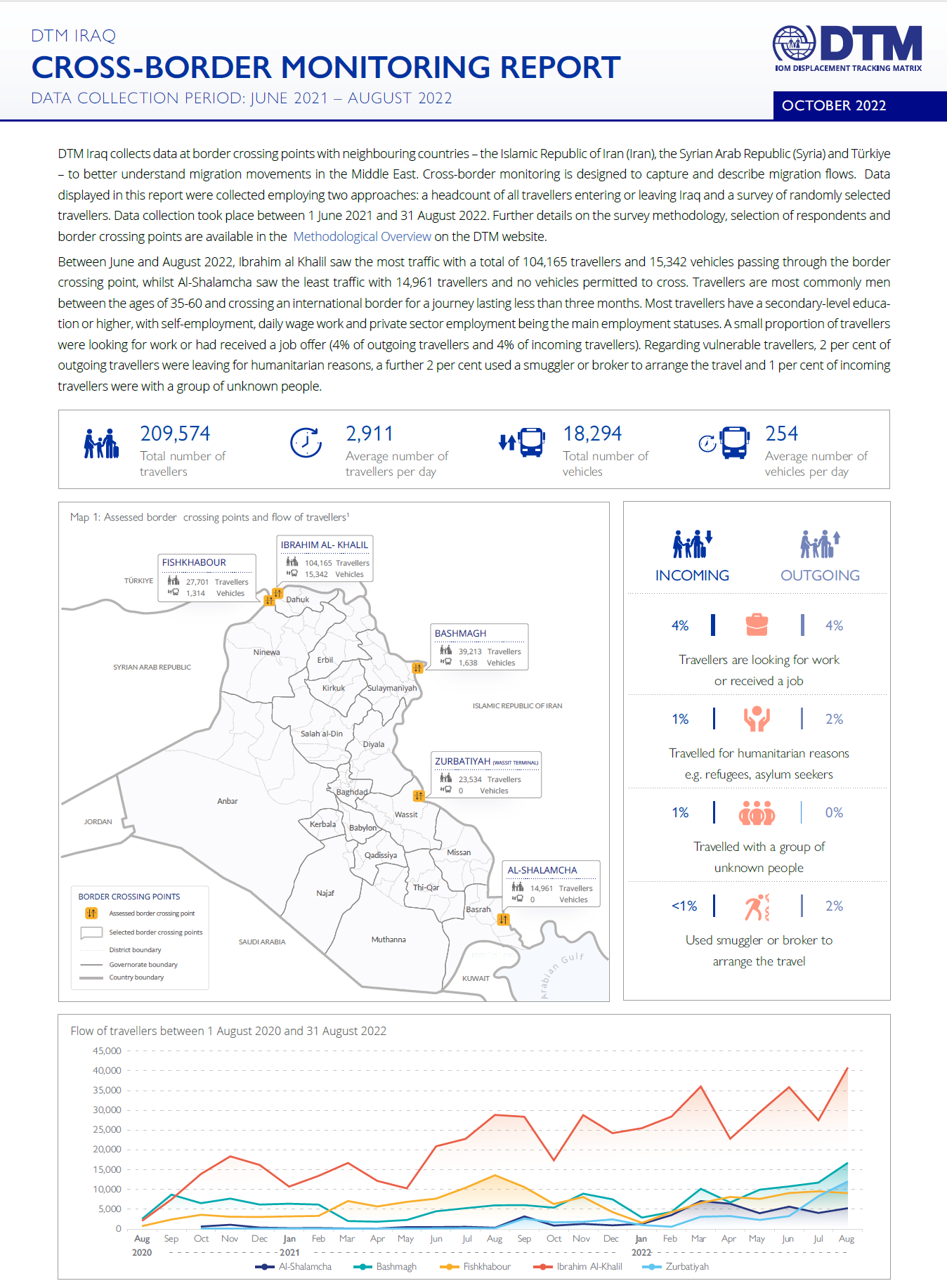
CROSS-BORDER MONITORING

CROSS-BORDER MONITORING
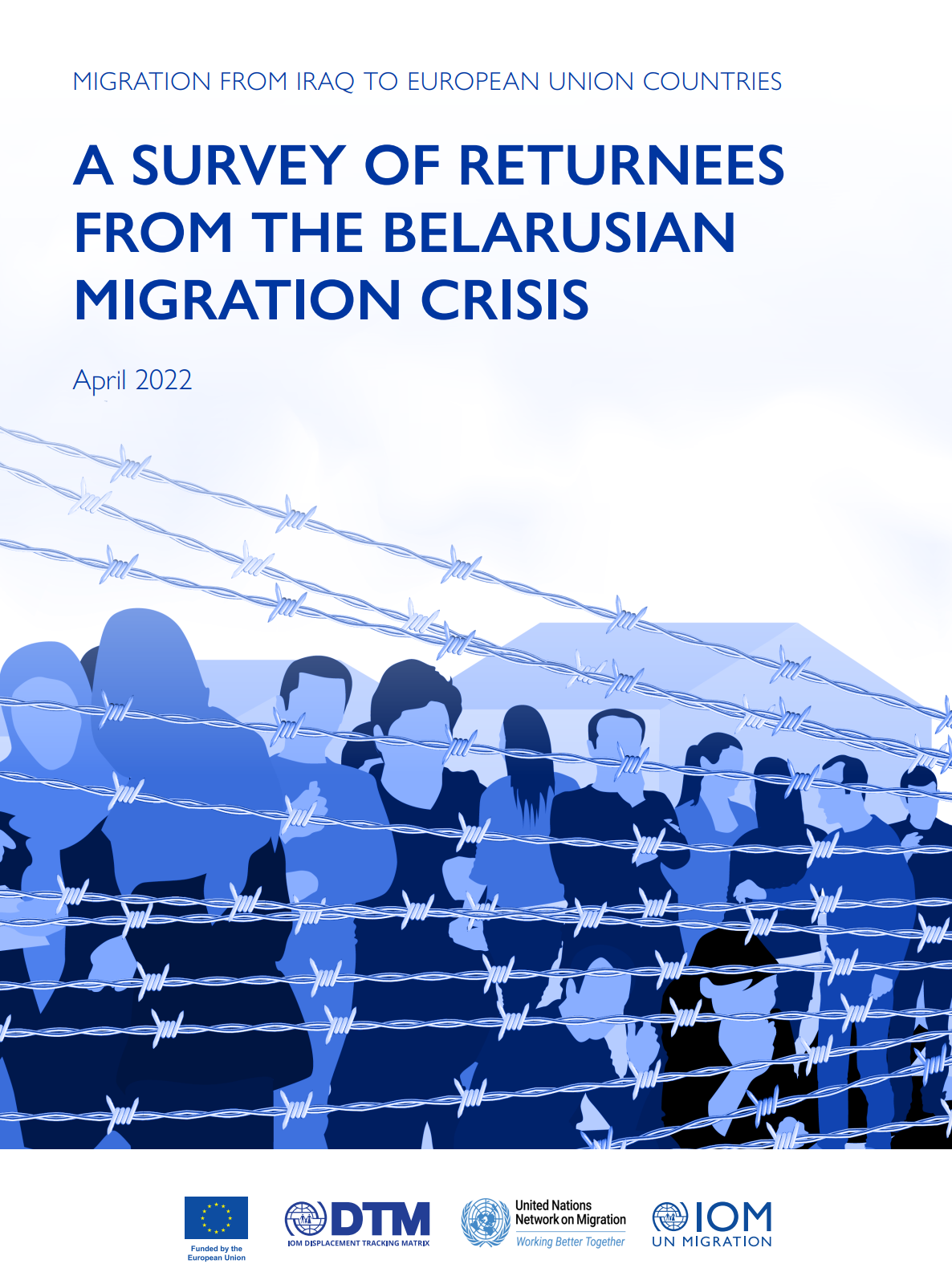
MIGRANTS PROFILE
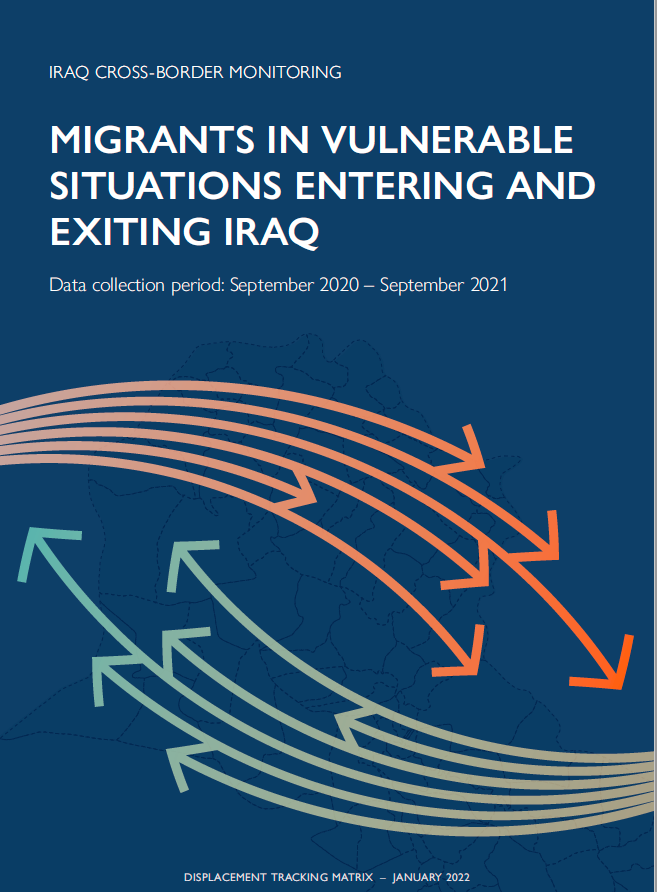
VULNERABLE MIGRANTS
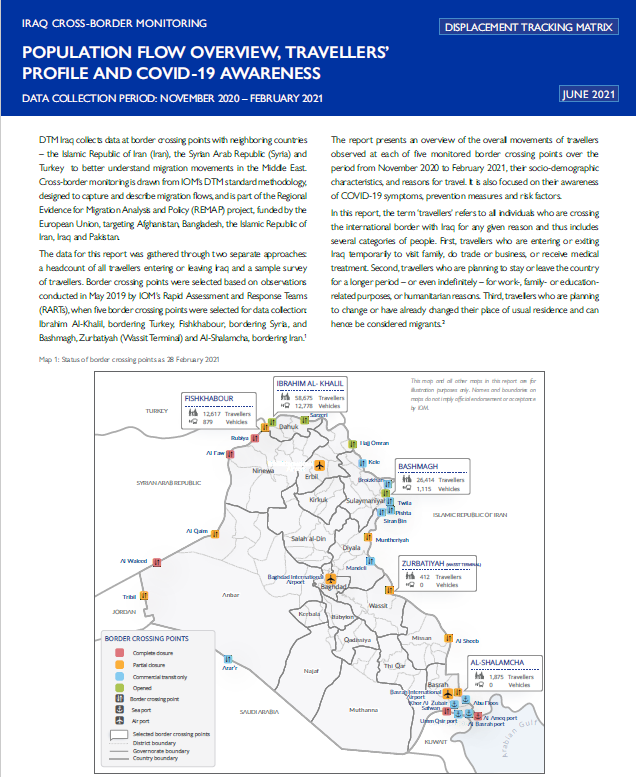
TRAVELLERS’ PROFILE
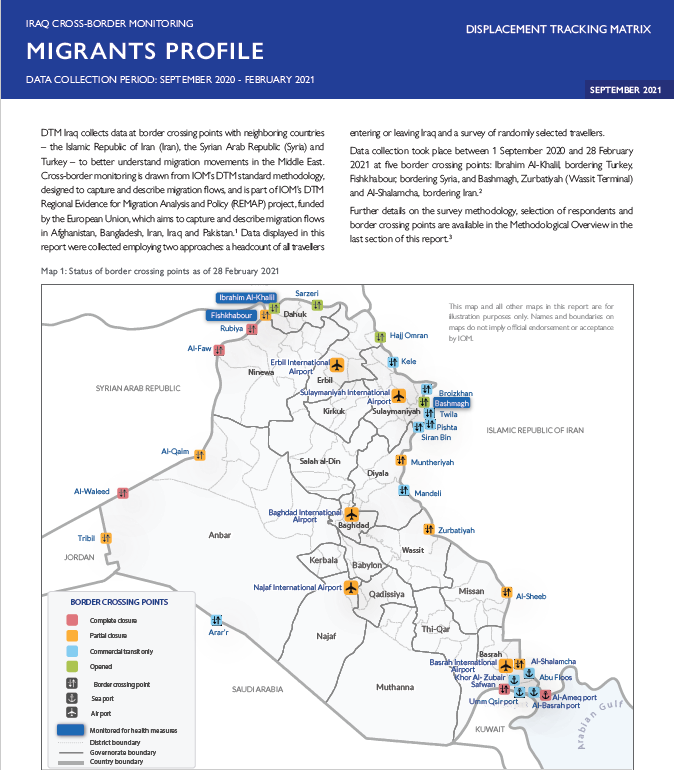
MIGRANTS PROFILE

TRAVELLERS’ PROFILE
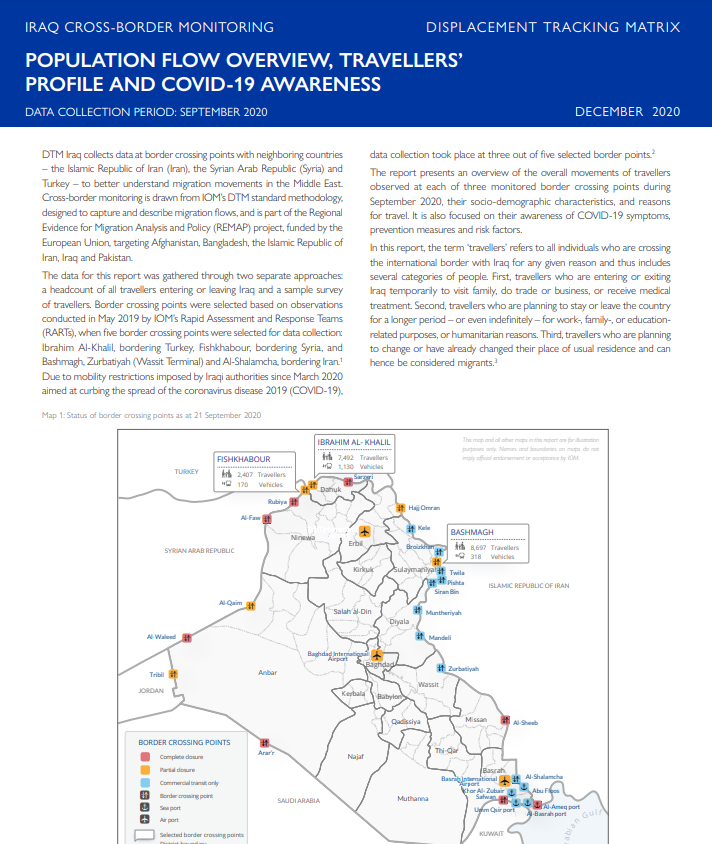
TRAVELLERS’ PROFILE
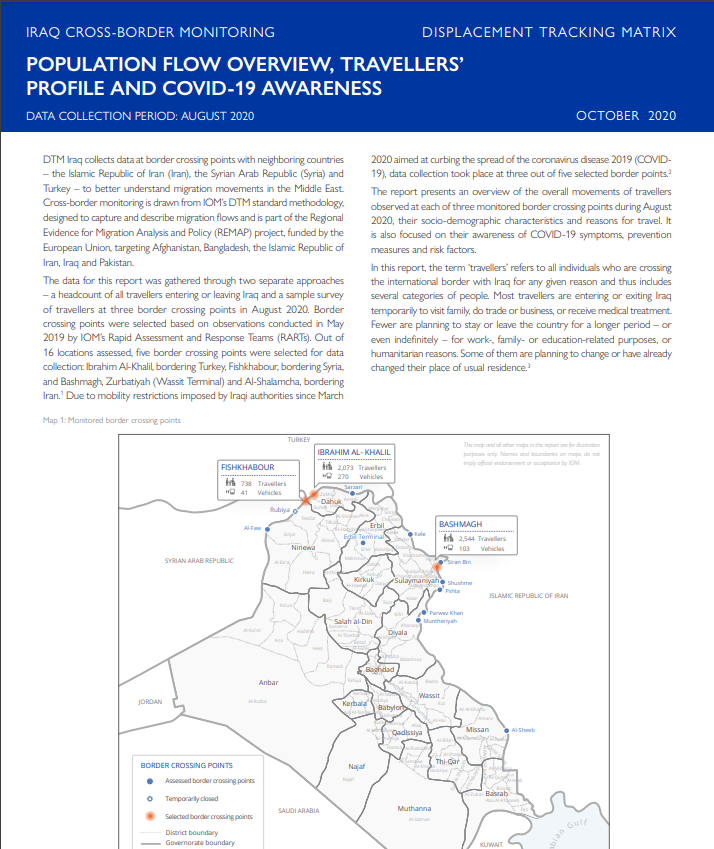
TRAVELLERS’ PROFILE
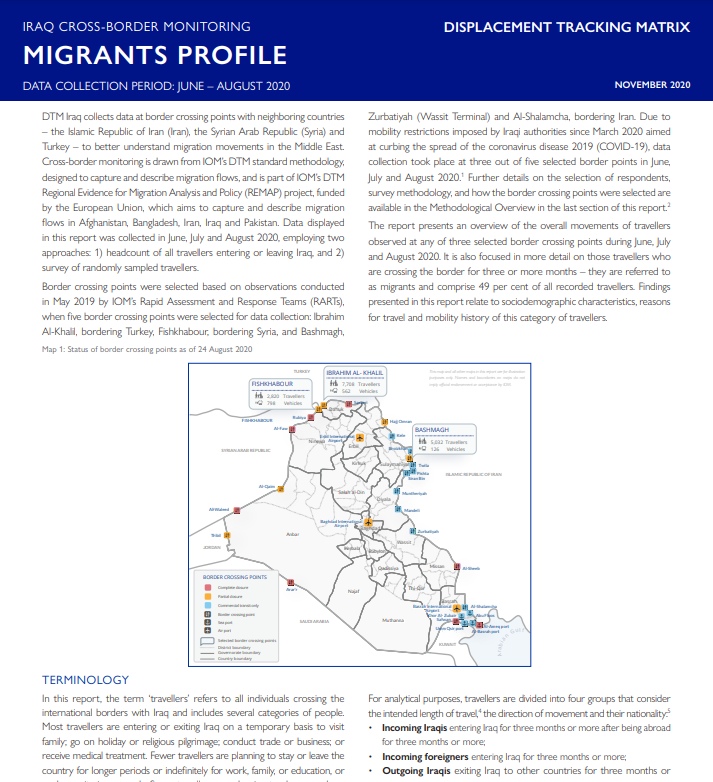
MIGRANTS PROFILE
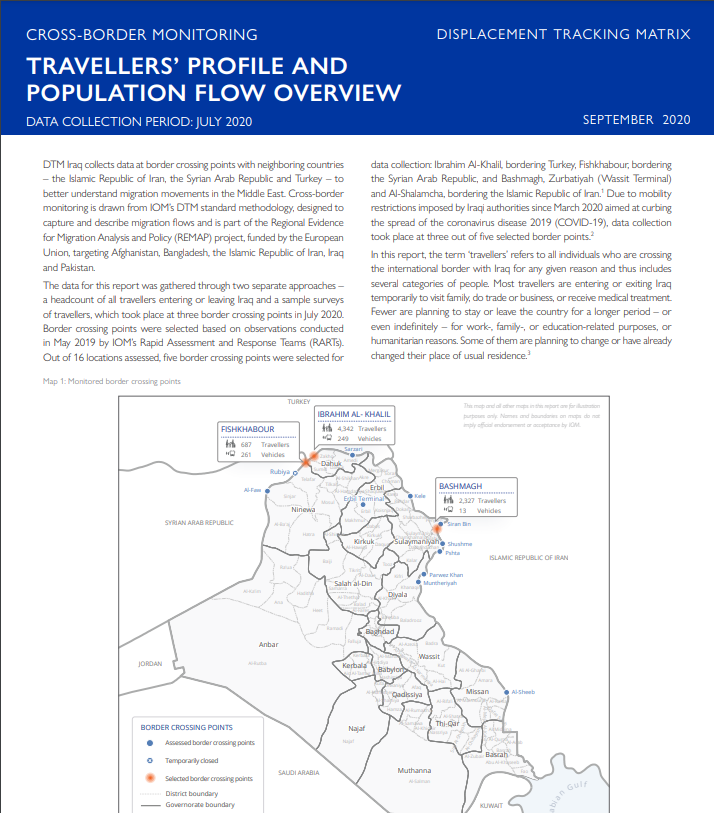
TRAVELLERS’ PROFILE
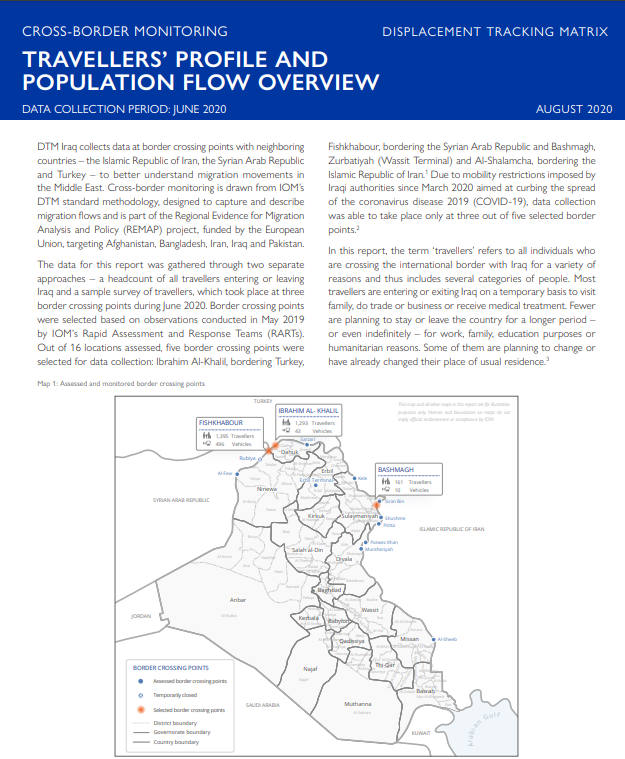
TRAVELLERS’ PROFILE

TRAVELLERS’ PROFILE
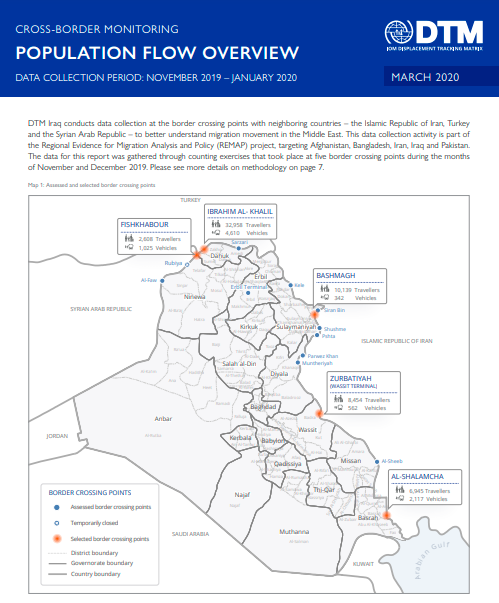
POPULATION FLOW OVERVIEW
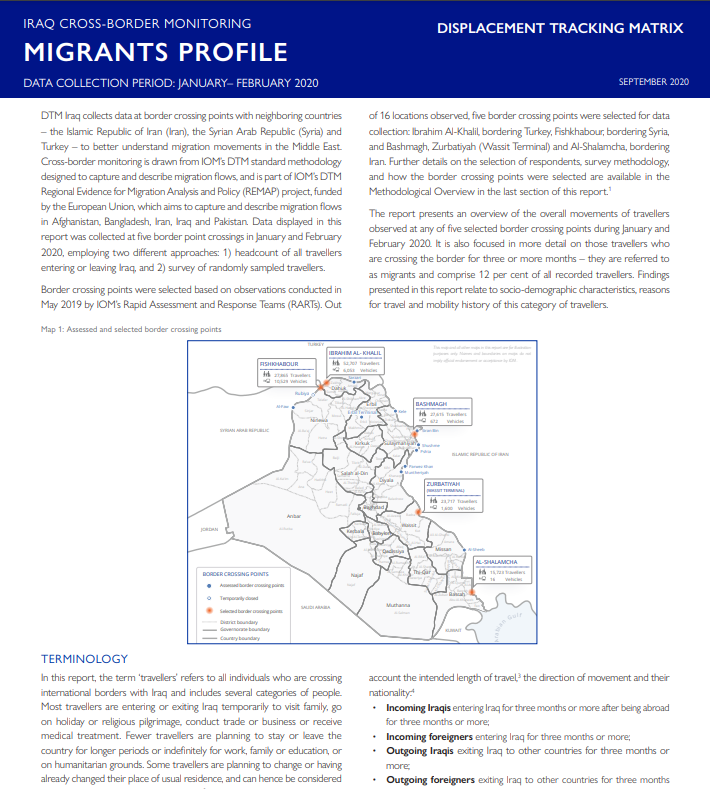
Migrants Profile
Returnees from Abroad Reports
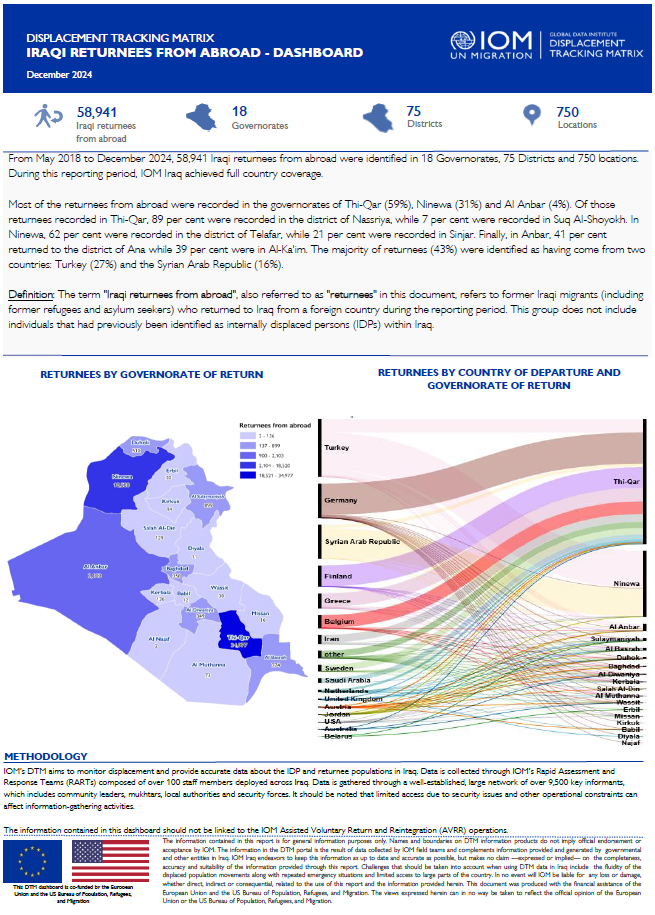

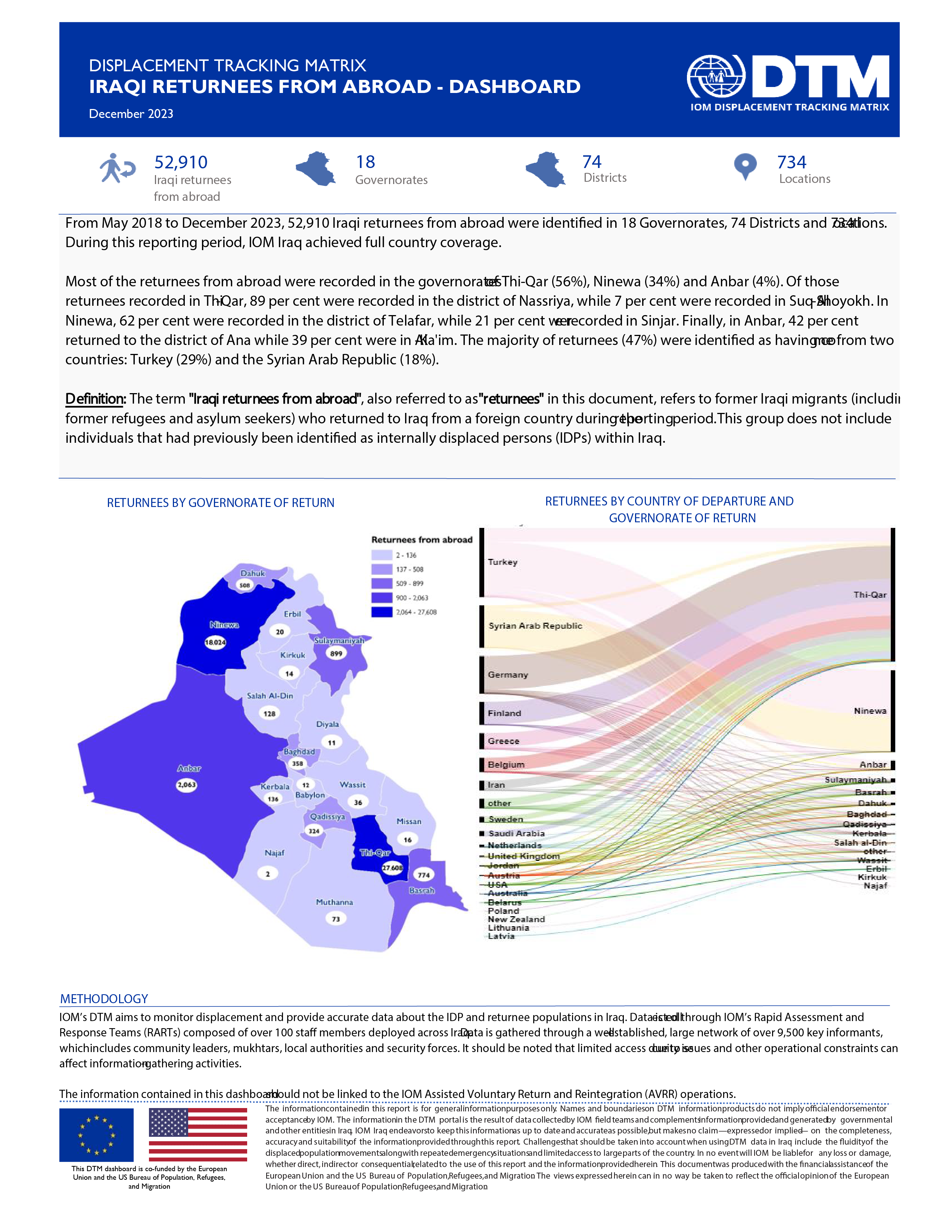
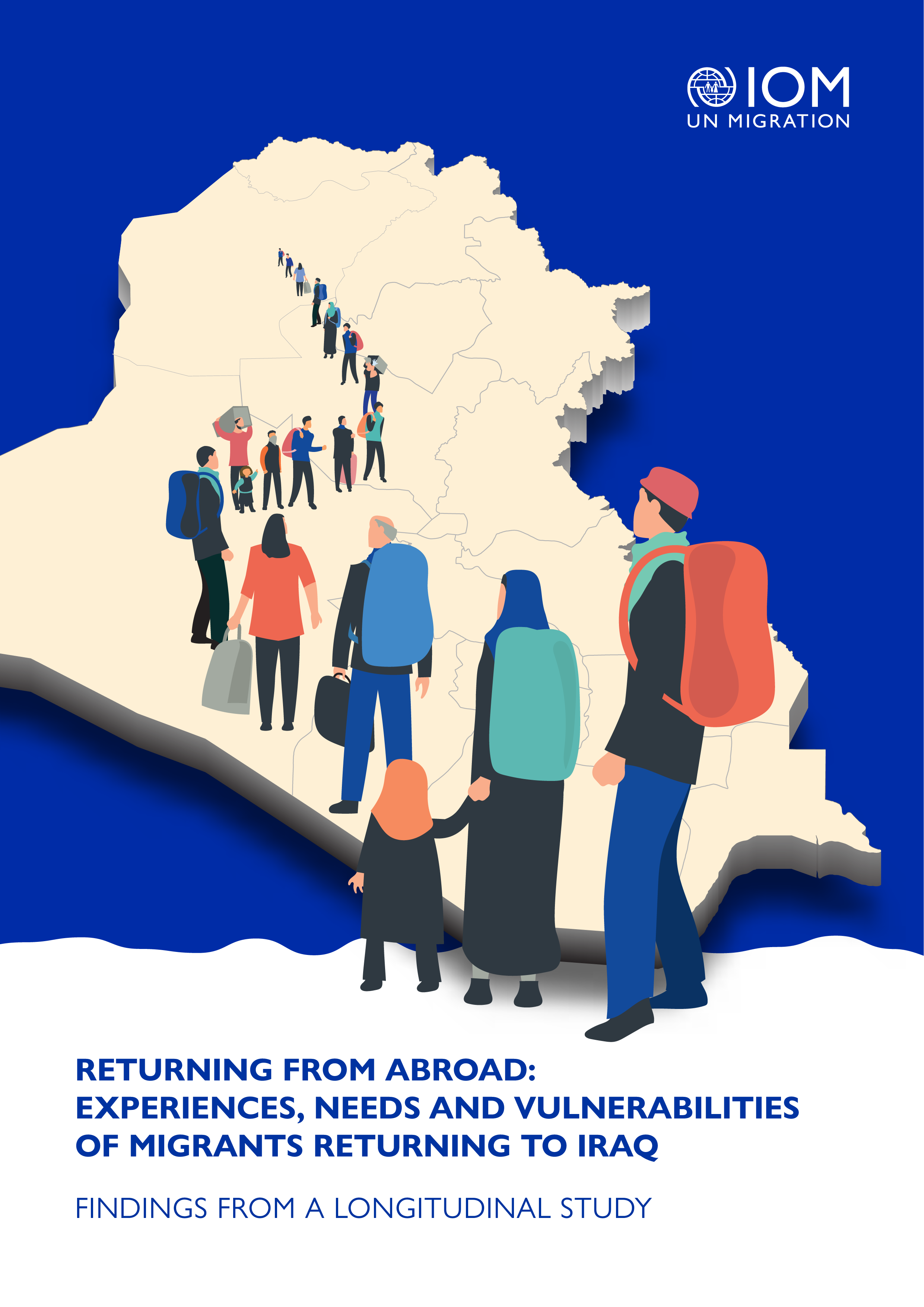
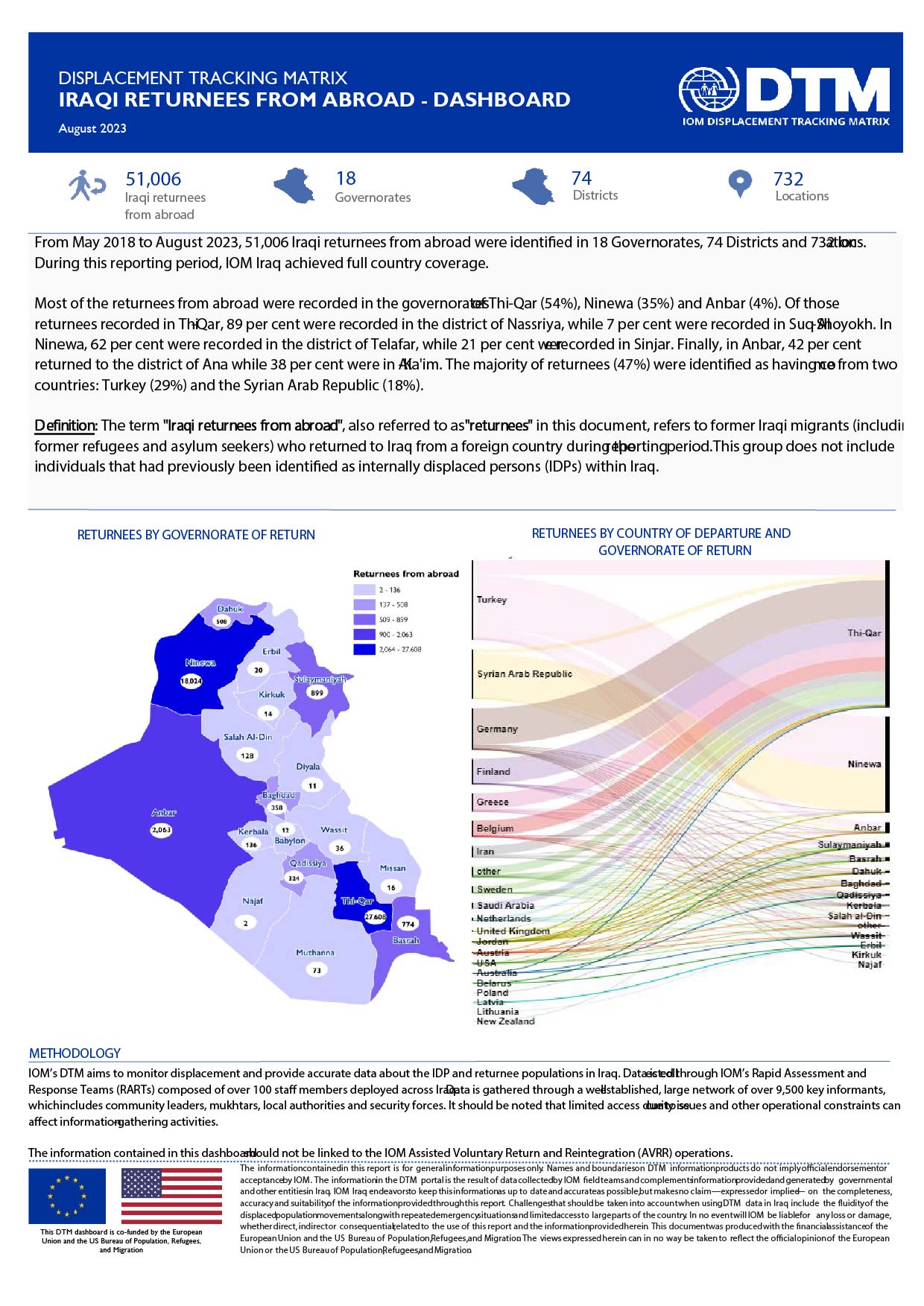
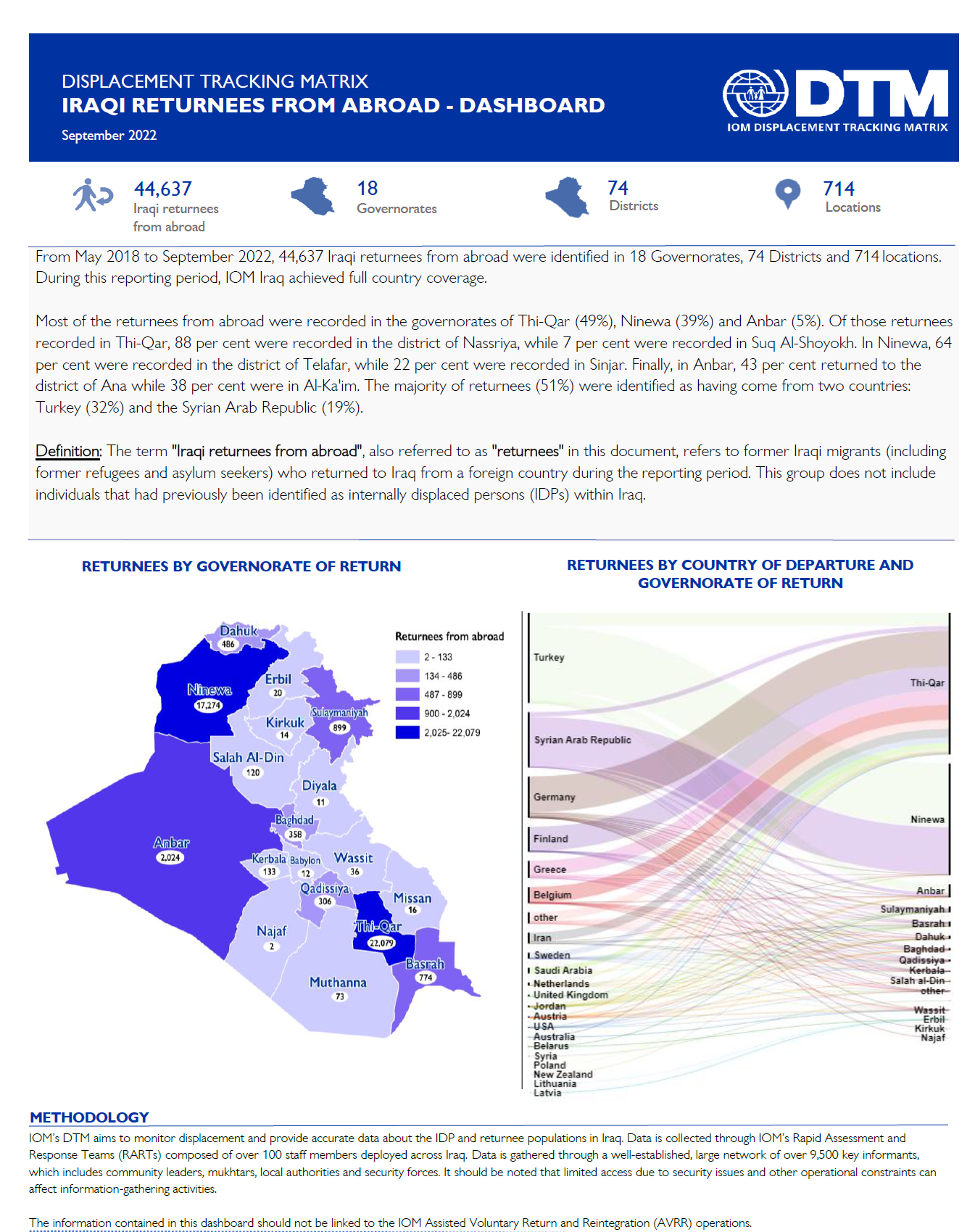
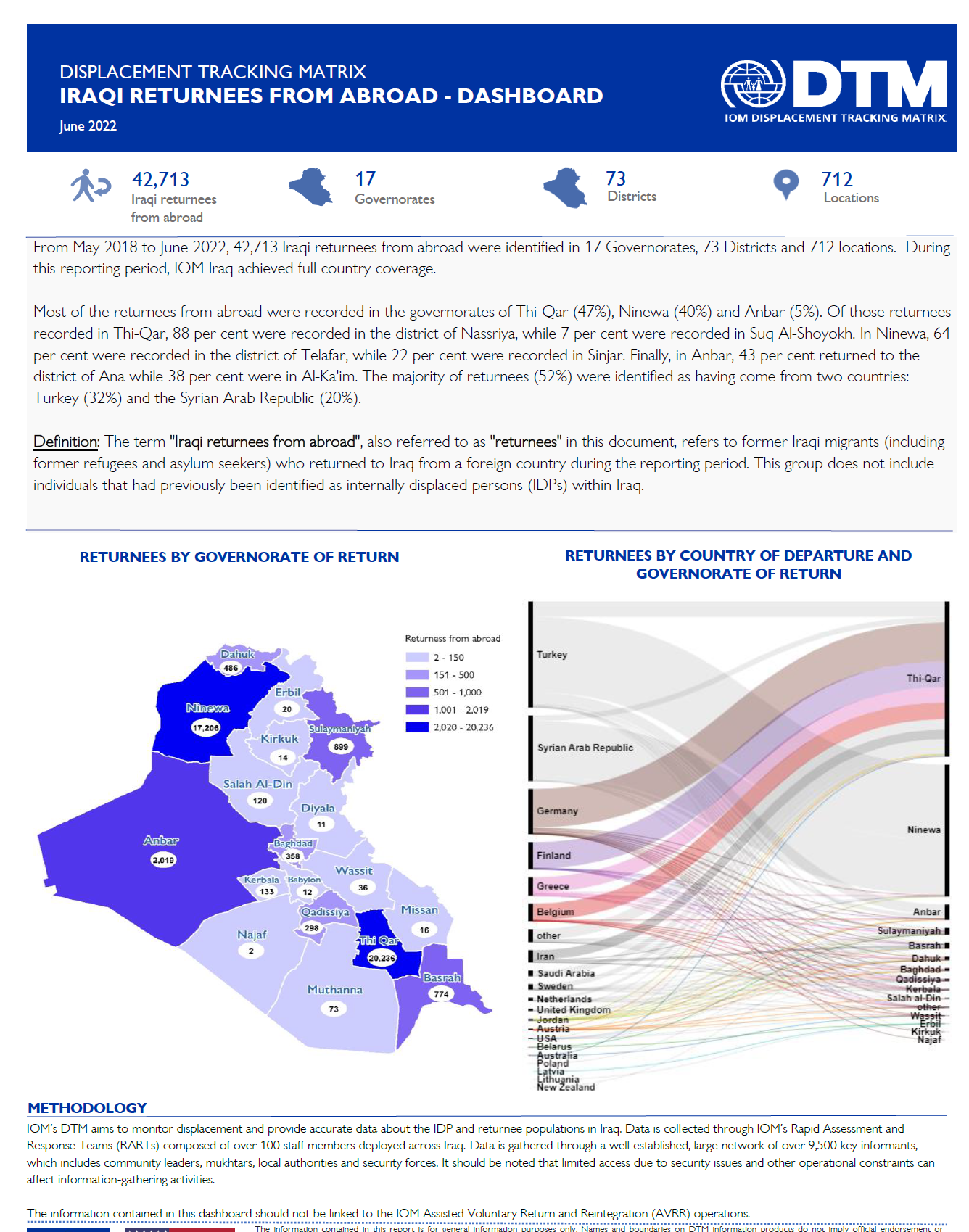
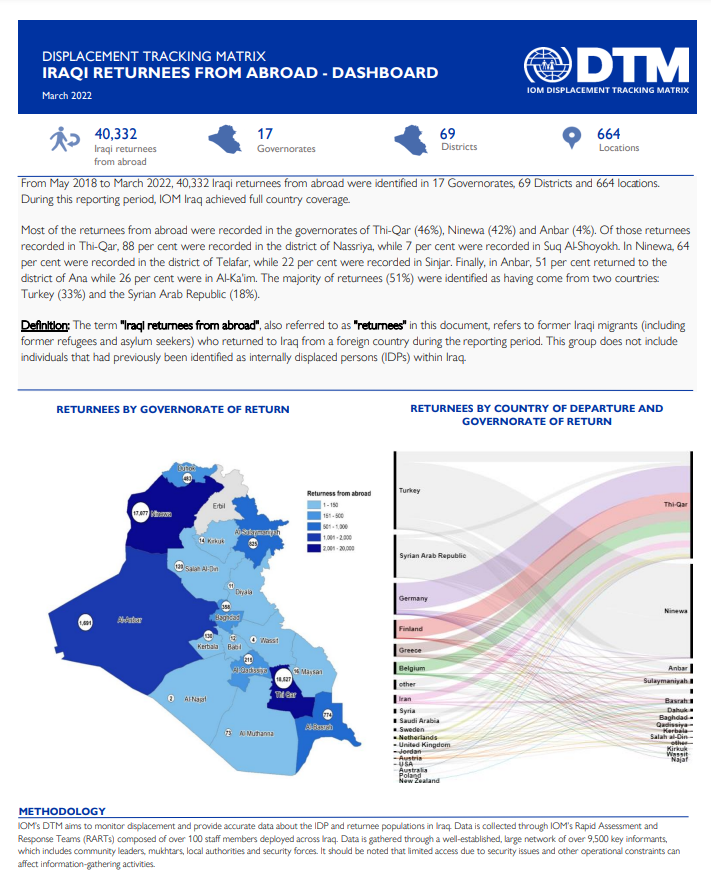
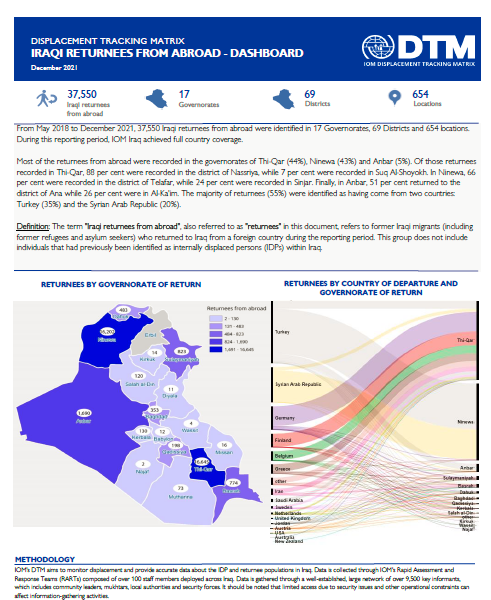
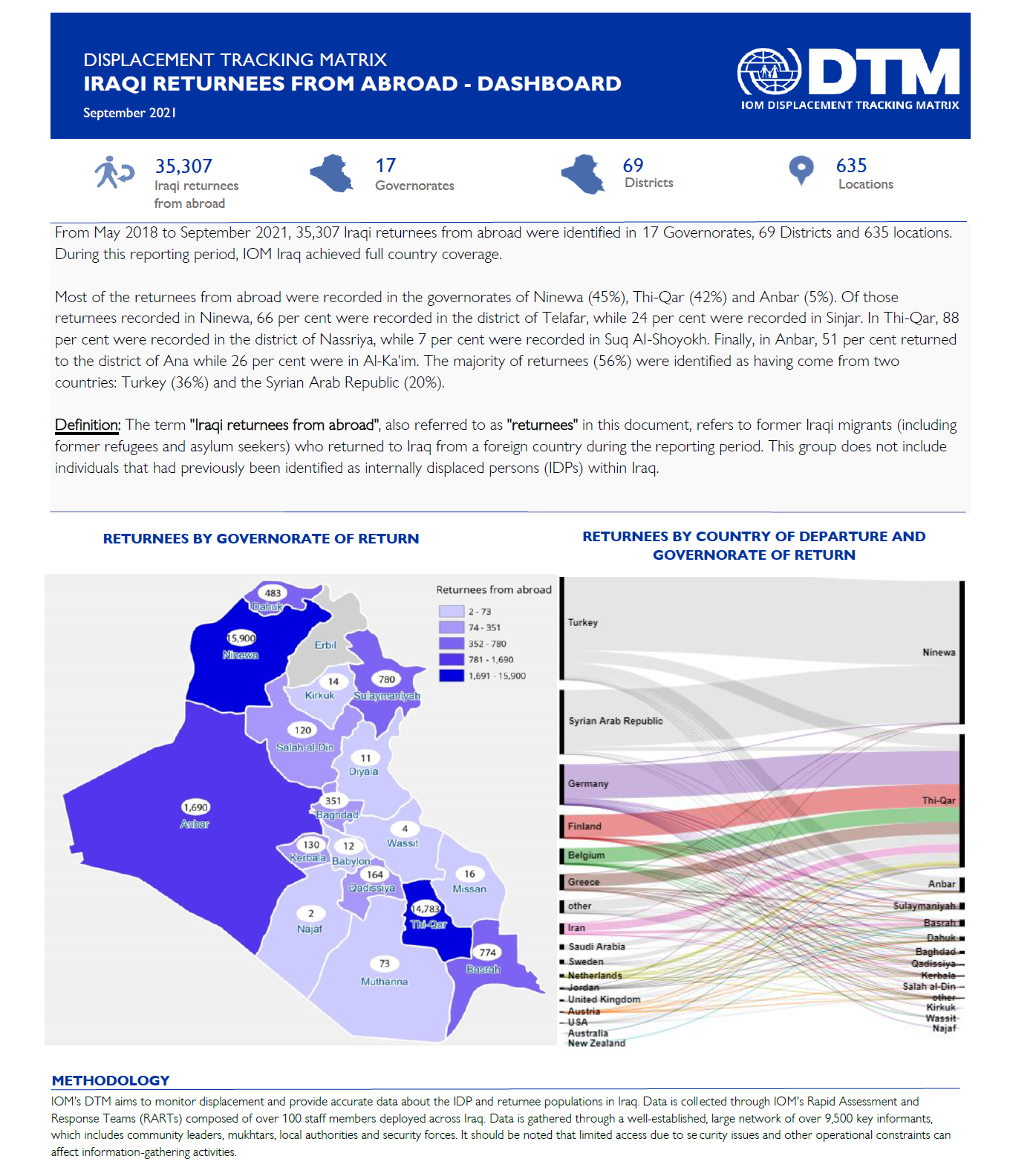

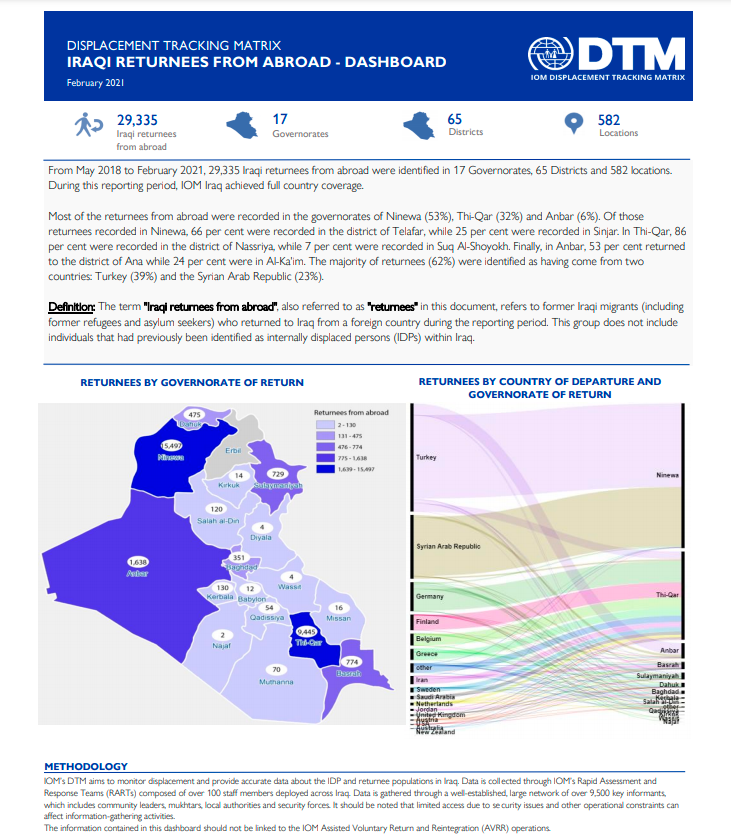


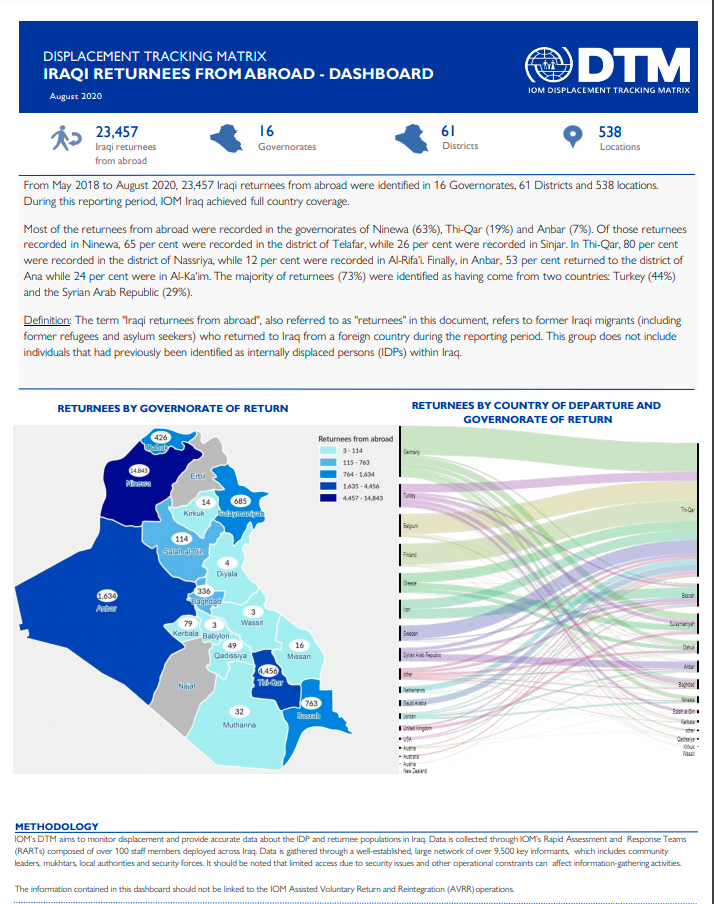
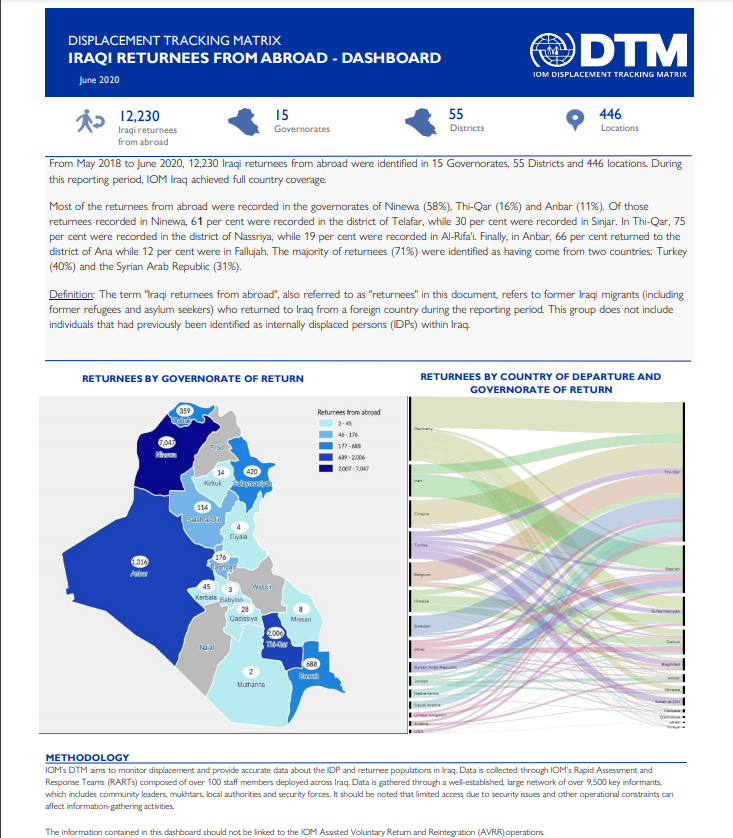
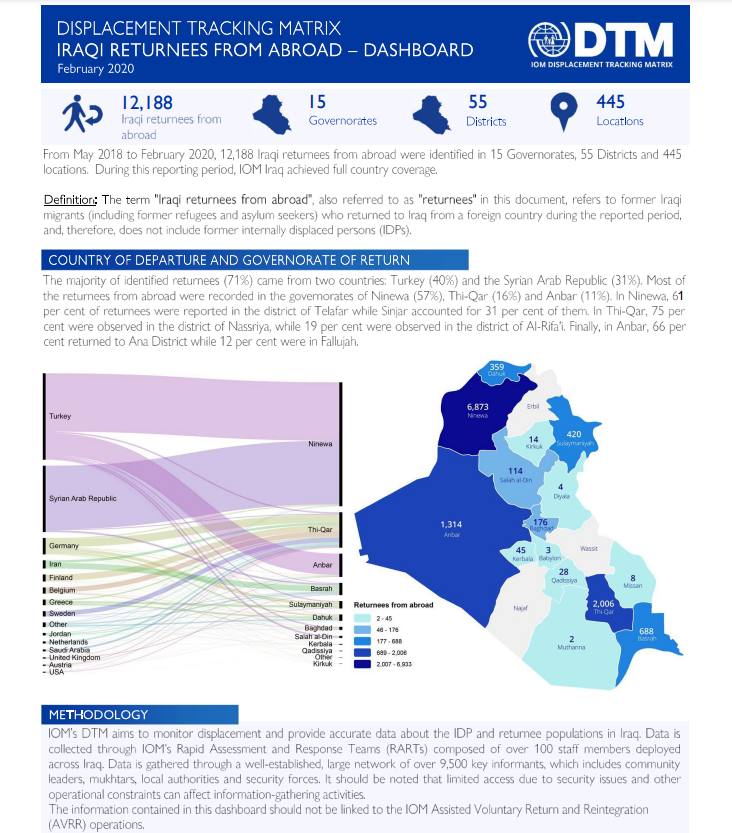
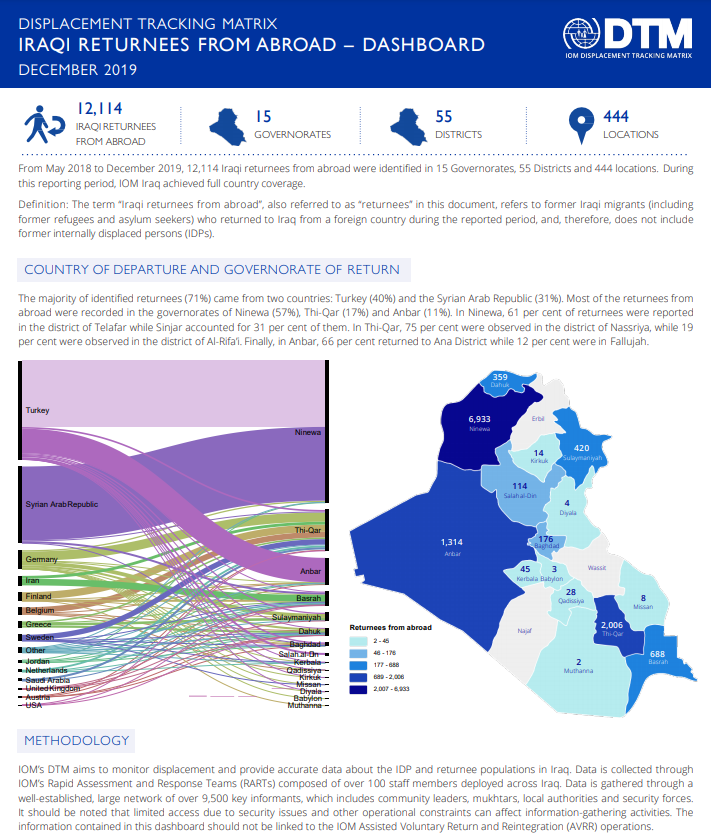
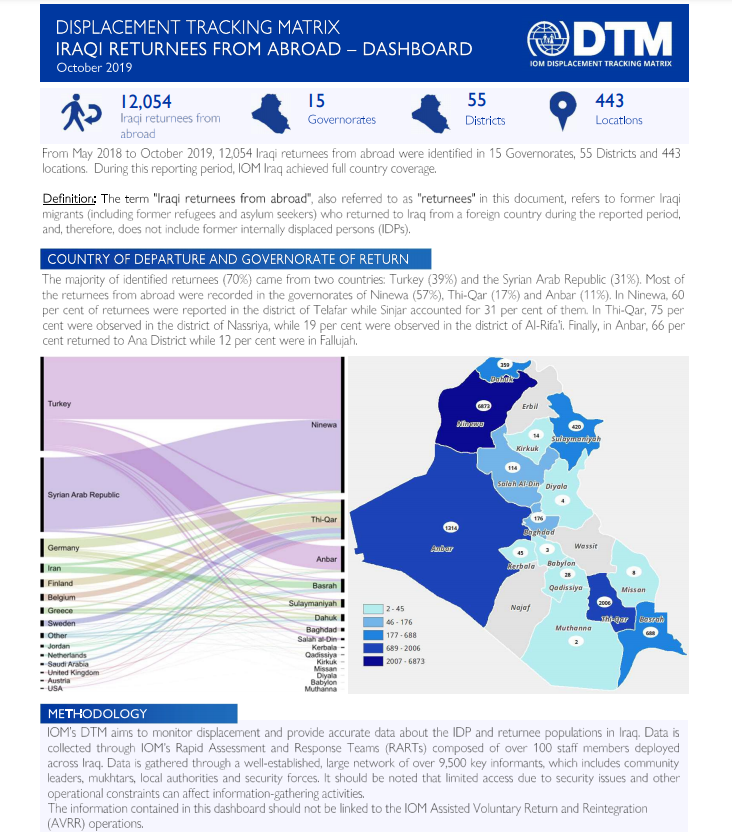

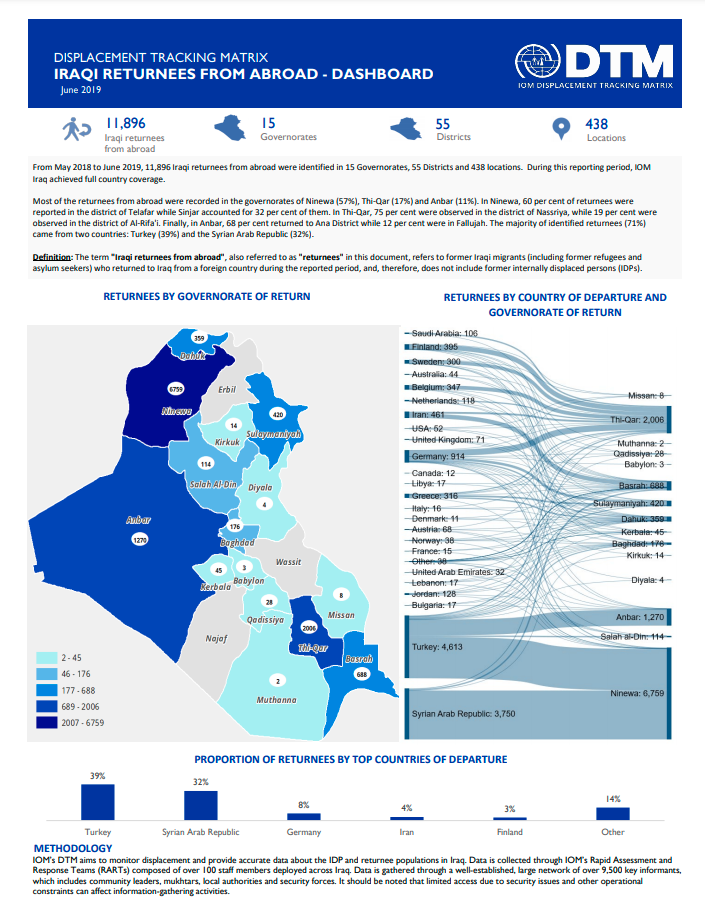
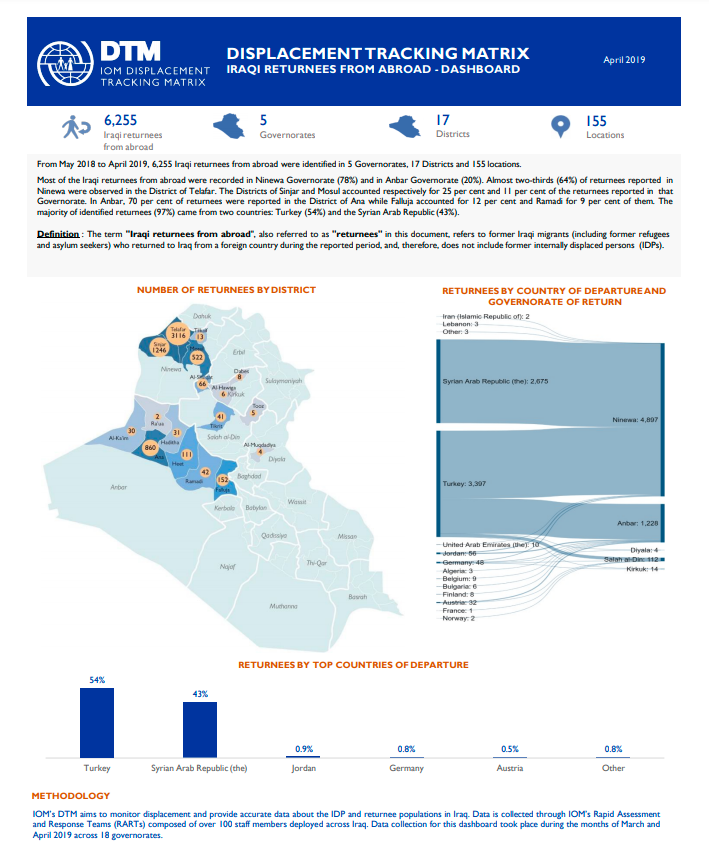
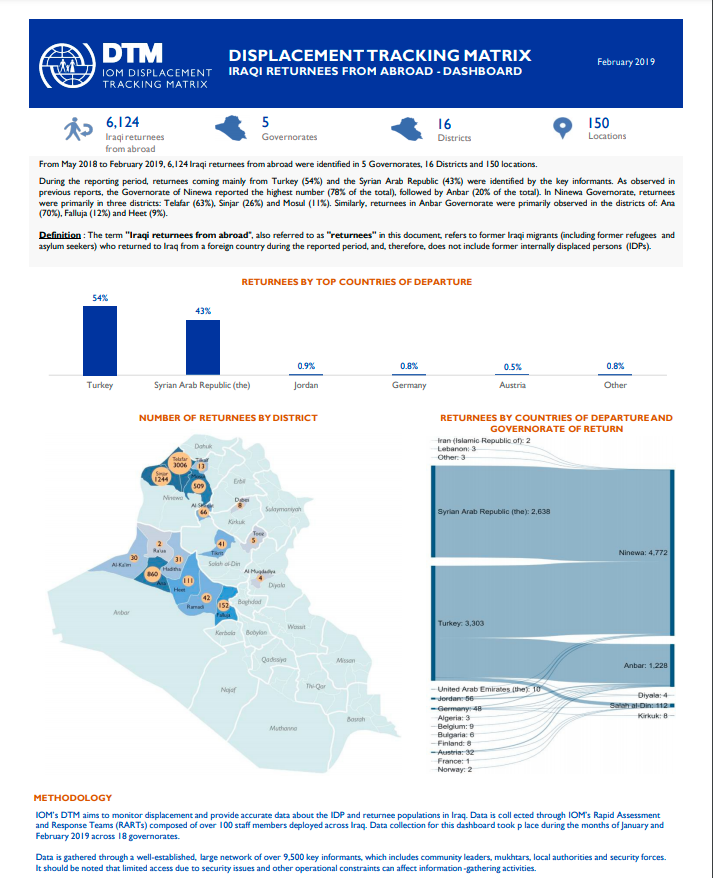
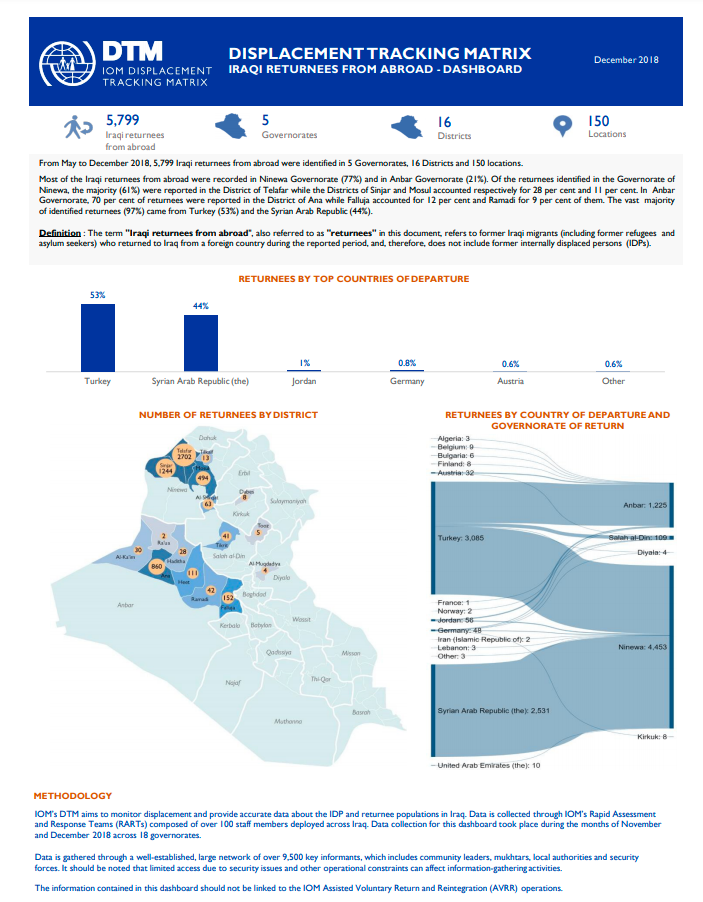
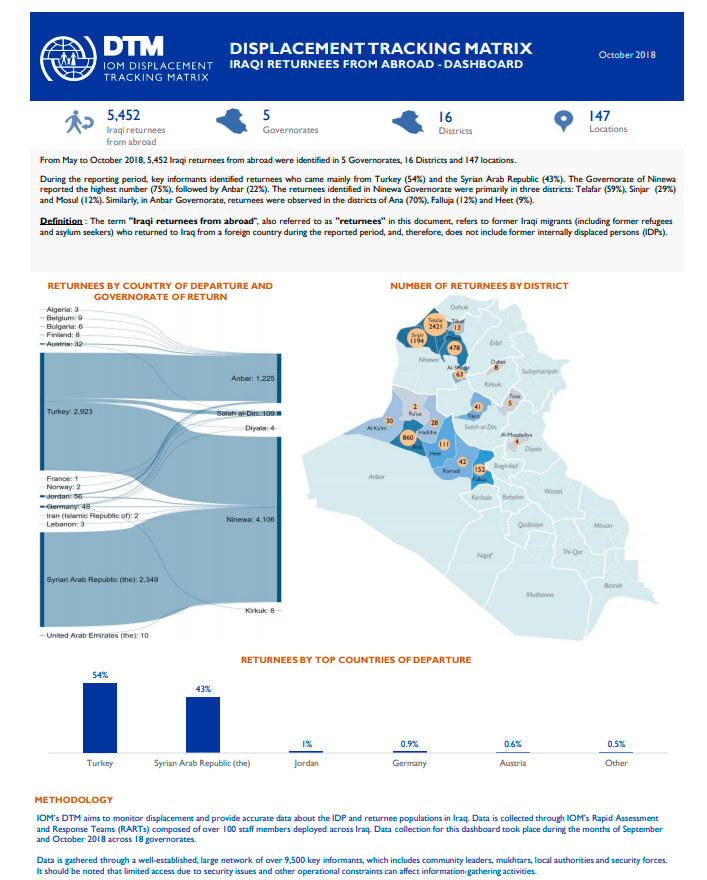
Datasets
Cross-border monitoring provides data on the number of individuals and vehicles transiting through five selected border points with Turkey, the Syrian Arab Republic and the Islamic Republic of Iran. It is focused on profiling the travellers and migrants in terms of their demographic characteristics, reasons for travel and vulnerabilities. The border points are the following:
- Ibrahim Al-Khalil in Dahuk Governorate, bordering Turkey;
- Fishkhabour in Dahuk Governorate, bordering the Syrian Arab Republic;
- Bashmagh in Sulaymaniyah Governorate, bordering the Islamic Republic of Iran;
- Zurbatiyah (Wassit Terminal) in Wassit Governorate, bordering the Islamic Republic of Iran; and
- Al-Shalamcha in Basrah Governorate, bordering the Islamic Republic of Iran.
Data for the Travellers’ Profile is collected through observation and face-to-face interviews every month, starting in January 2020, while data for the Migrants’ Profile is collected continuously and reported every three months.
Data is collected through IOM’s enumerators, composed of over 14 staff members deployed across Iraq (35% of enumerators are female) at the 5 border crossing points, 5 days per week (weekdays only) from 8:30 am to 5:00 pm.
Travellers for face-to-face interviews are selected randomly through the adoption of a ‘systematic step/interval’ selection process – i.e. travellers are systematically selected at fixed intervals from the start of the workday. The interval is fixed at 1:5 (one in every five individuals will be selected for an interview). All travellers aged 18 years and older who were crossing borders were eligible for an interview, regardless of their nationality. To estimate the total number of travellers and their characteristics, the sampling weight is applied.
The reference population for cross-border monitoring is:
- travellers (Iraqis and non-Iraqis) who enter Iraq after being abroad (incoming flow); and
- travellers (Iraqis and non-Iraqis) who exit Iraq to travel to other countries (outgoing flow).
Within the reference population, some travellers are of specific interest – for example, migrants (defined as travellers entering/leaving Iraq for more than three months). To identify this population, all sampled travellers are asked a screening question about the length of travel to check whether he/she satisfies the criteria.
The resulting data is representative of the individuals crossing at each of the selected border points separately only during a specific period. Data should not be generalized and does not represent a full picture of inter and intra-regional migration, but rather of migration flows at the selected border points. Data collected in assessed border points should not lead to assumptions about border crossings in non-assessed border points or areas without monitoring points.
An overview of the methodology behind the Flow Monitoring activities, please consult the Methodological Overview. For a more detailed presentation of the implementation and steps, please consult the Detailed Methodological Guide.

